Shiplap backsplashes have surged in popularity as a charming, budget-friendly alternative to traditional tile, bringing farmhouse warmth and architectural interest to modern kitchens. Originating as ship hull siding, shiplap’s overlapping wooden boards now offer a versatile backsplash option that designers favor for its texture and ease of installation. From classic horizontal layouts to bold chevron patterns, shiplap can be painted, stained, or paired with materials like marble and brick to suit any style. Whether you’re aiming for a rustic cottage vibe or a sleek contemporary look, these 20 shiplap backsplash ideas will inspire your next kitchen makeover.
1. Classic Horizontal Painted Shiplap

A timeless choice, horizontal painted shiplap offers clean lines and a bright backdrop for kitchen cabinets and countertops. Typically installed with minimal gaps for a seamless look, the boards can be painted white, gray, or any color to complement your palette. This style emphasizes the horizontal flow of the kitchen, making the space feel wider. It also provides a durable surface that can be wiped clean, ideal for cooking areas. Many designers recommend latex-based enamel paint to ensure longevity and ease of maintenance in high-traffic kitchen zones.
2. Raw Wood Finish Shiplap
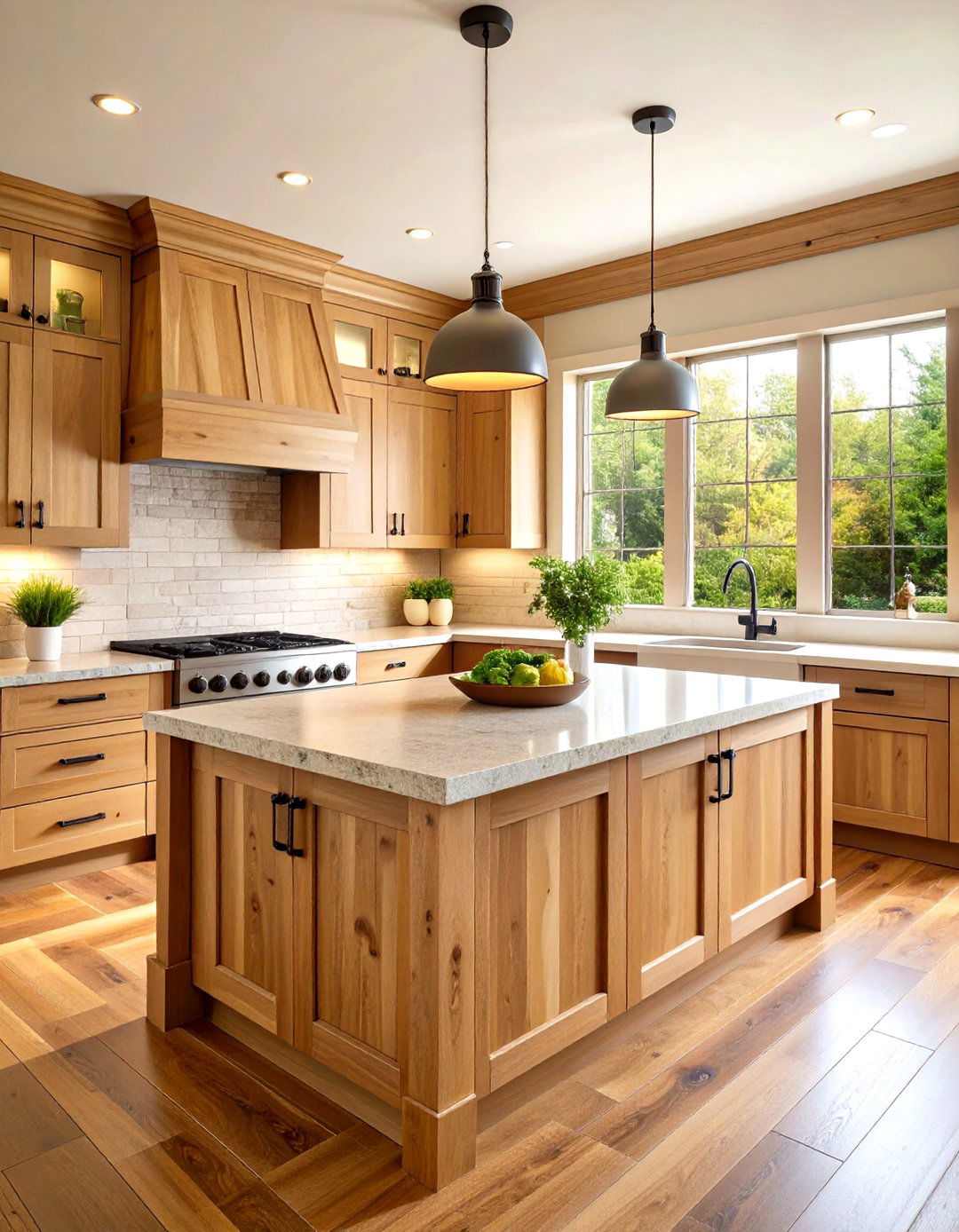
Embracing the natural grain and knots of wood, a raw finish shiplap backsplash brings organic warmth to the kitchen. Boards can be lightly sanded and sealed with clear polyurethane, highlighting wood’s inherent texture while protecting against moisture and stains. This approach works especially well in country or rustic kitchens, pairing beautifully with stone countertops and open shelving. Over time, the wood can develop a subtle patina, adding character. DeVOL Kitchens showcases this aesthetic, featuring pale wood planks that create a seamless, nature-inspired look above the sink.
3. Vertical Shiplap Backsplash
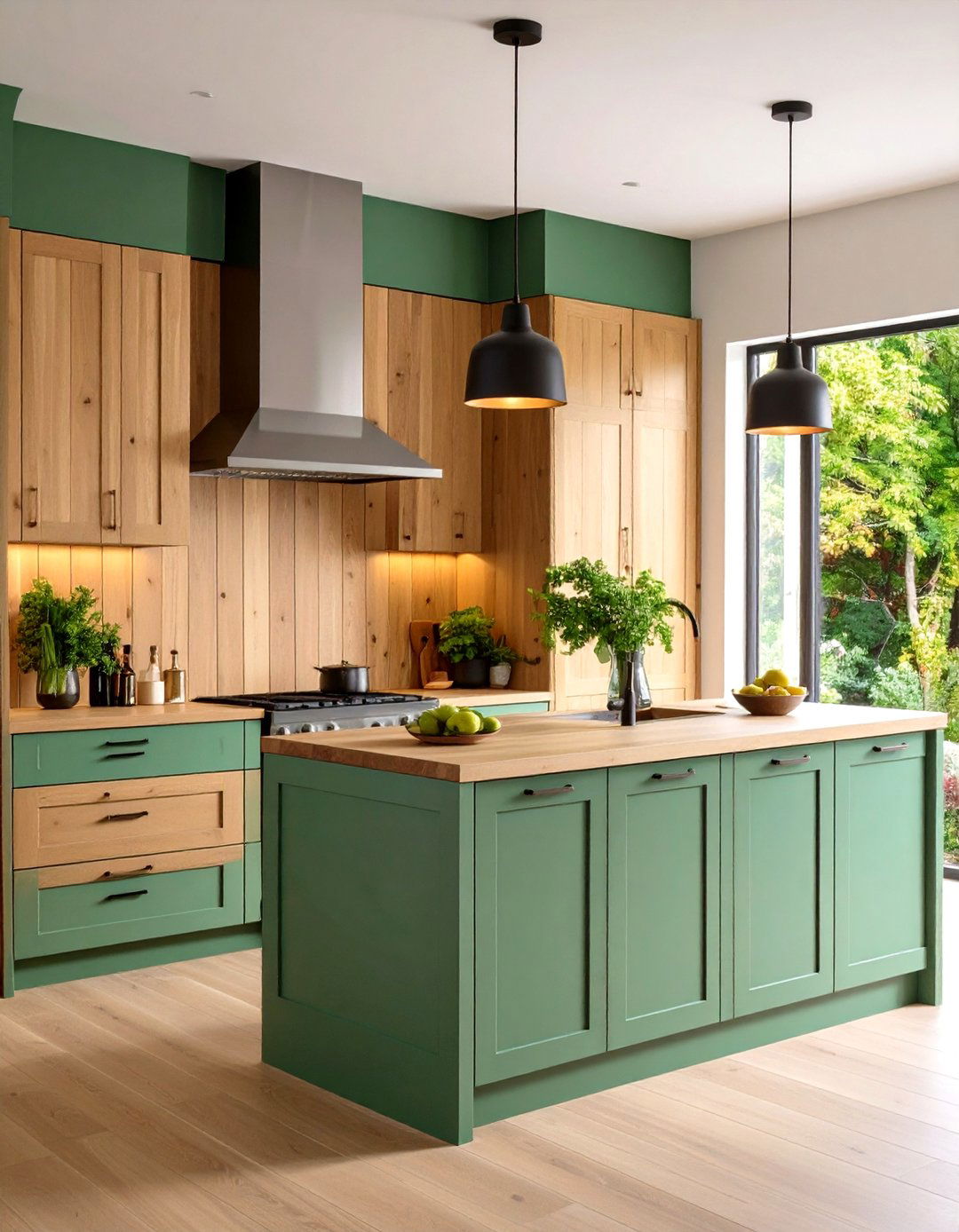
Turning the boards upright creates a vertical shiplap backsplash that visually raises the room’s height. This orientation is ideal for kitchens with lower ceilings or for highlighting focal areas like the stove or sink wall. Vertical installation also offers a modern twist on the traditional horizontal application, lending a contemporary edge to farmhouse or transitional kitchens. The clean, straight lines guide the eye upward, enhancing perceived spaciousness. In powder rooms and accent walls, designers have used vertical shiplap to great effect, proving its versatility beyond full-kitchen installations.
4. Chevron-Patterned Shiplap
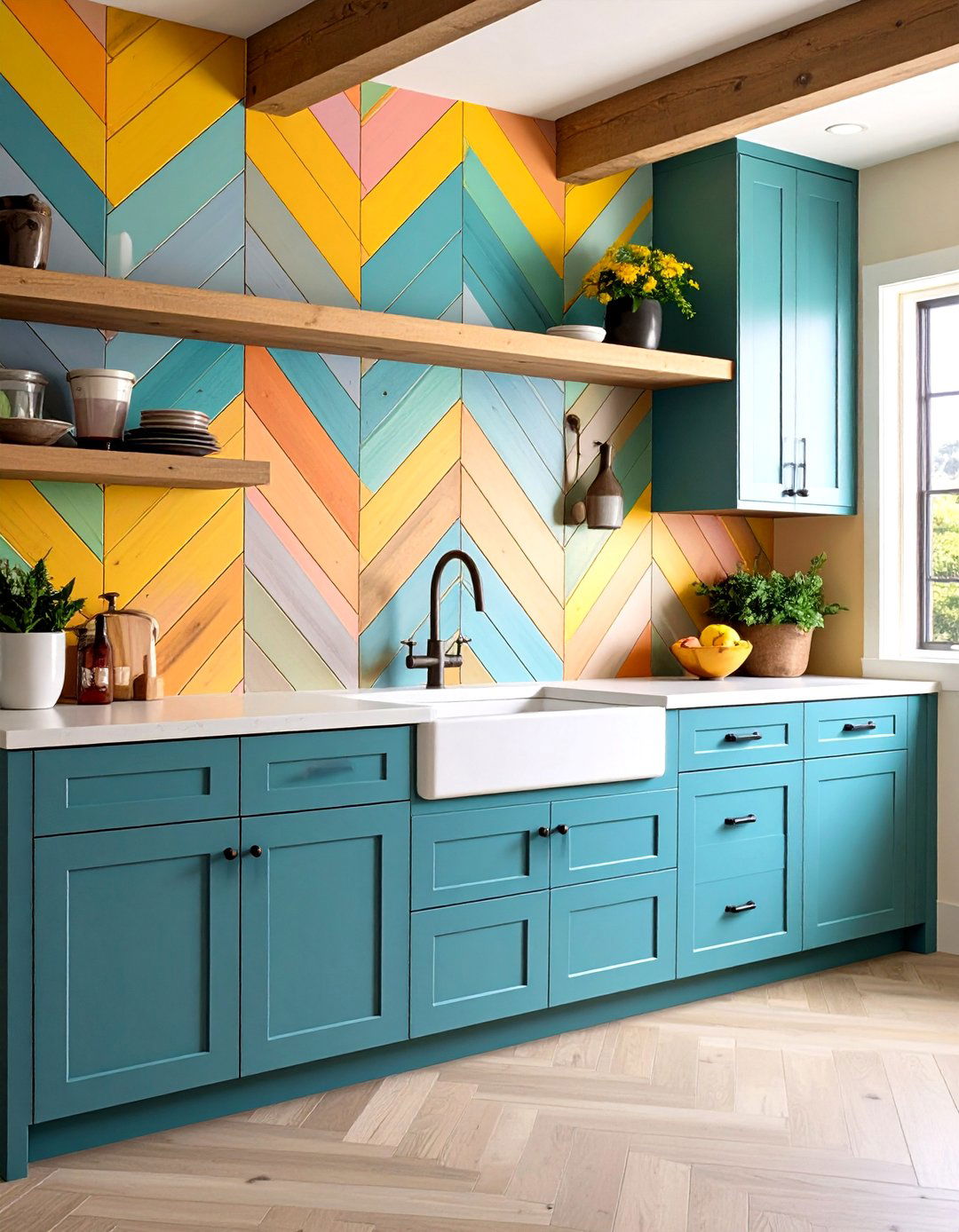
For a dynamic look, arrange cut shiplap planks into a chevron pattern. Each board is cut at a precise angle so that two meet in a perfect ‘V’ shape, creating an eye-catching zigzag across the backsplash. This technique adds depth and movement, making it a statement feature behind open shelving or above a modern farmhouse sink. Chevron shiplap works well when painted in contrasting tones or left natural to showcase wood grain. It requires careful measuring and installation but rewards with a bespoke artisan finish that elevates simple wooden planks into a bold design element.
5. Diagonal Shiplap Accent
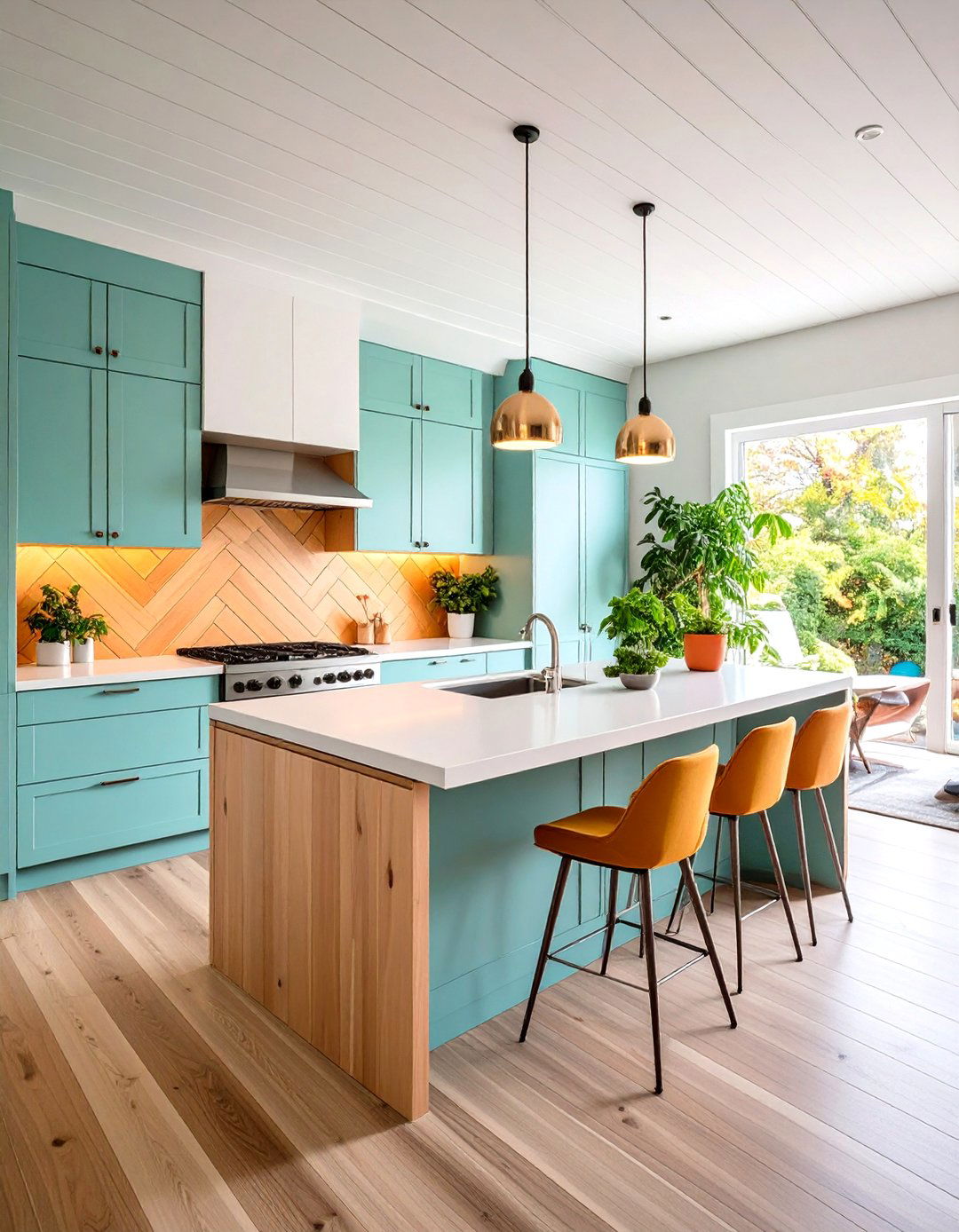
By installing boards at a single diagonal angle—commonly 45°—you can create a subtle yet striking diagonal shiplap accent. This method breaks the monotony of vertical or horizontal lines, adding visual intrigue without overwhelming the space. Diagonal shiplap works particularly well as a small backsplash behind a range or a prep area, drawing the eye to that focal point. The diagonal orientation can make a compact kitchen feel more expansive and dynamic. Pair with minimalist cabinet styles and neutral grout lines to let the pattern shine while keeping maintenance straightforward.
6. Shiplap with Floating Shelves
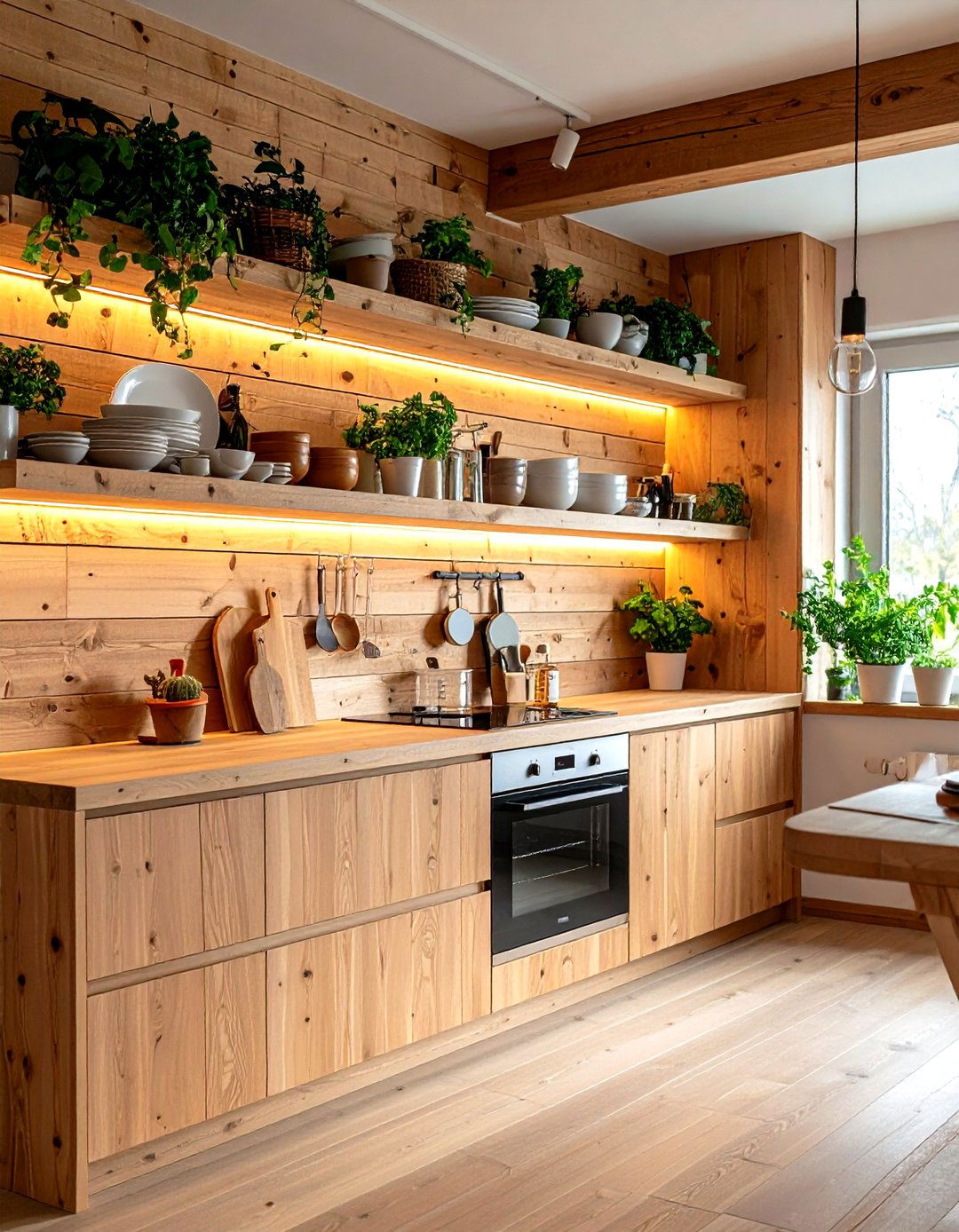
Combining a shiplap backsplash with open or floating shelves introduces both texture and functionality. The shelves appear to ‘float’ against the shiplap boards, creating display space for dishware and décor while showcasing the wood’s horizontal or vertical pattern. This design is perfect for small kitchens where closed cabinetry might feel too heavy. The contrast between solid wood shelves and the shiplap’s linear detail adds depth, and recessed under-shelf lighting can further accentuate the wood grain. It’s an inviting, personalized approach that merges storage with style.
7. Two-Tone Shiplap Backsplash
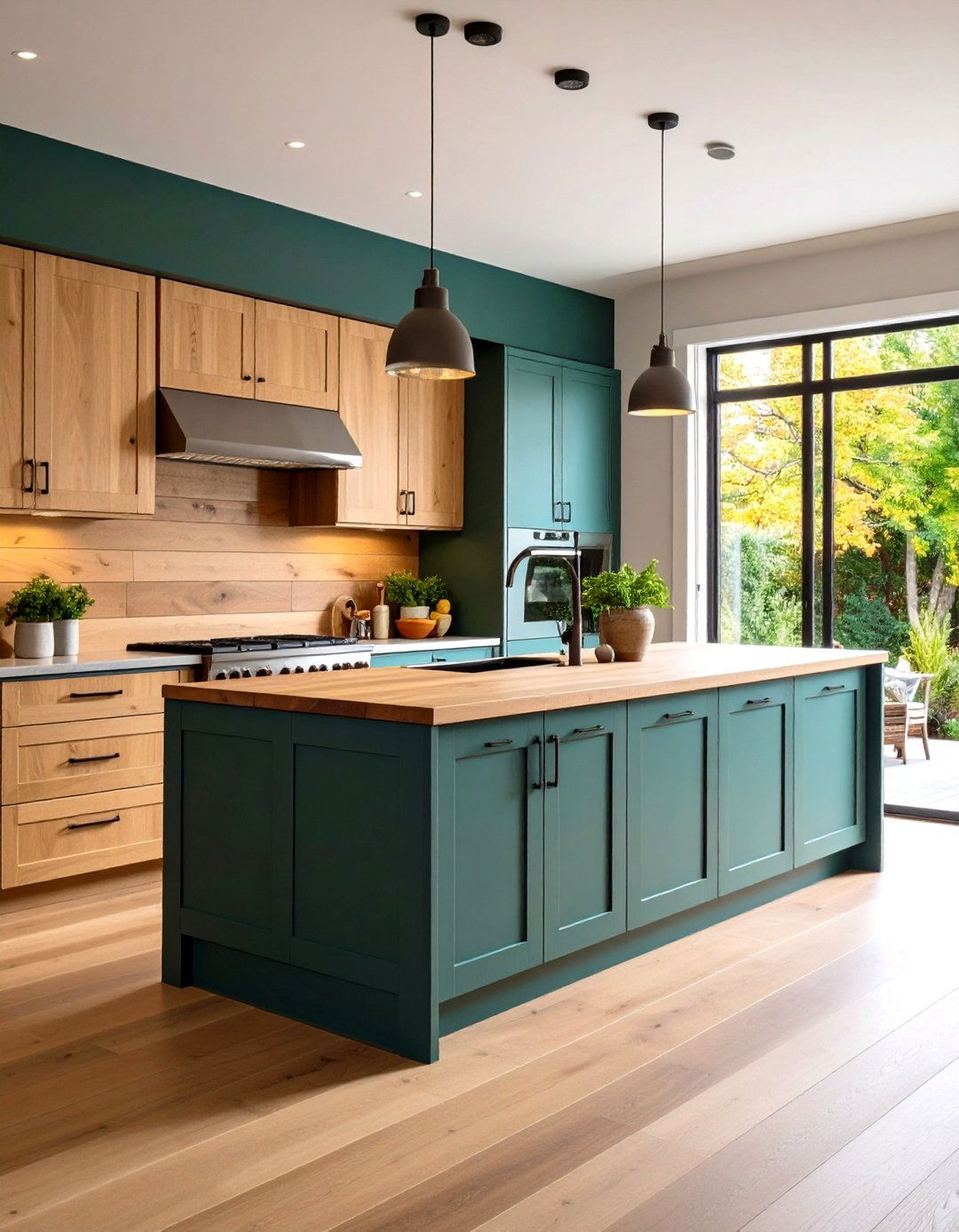
Divide the backsplash into two painted hues—perhaps a darker tone on the lower half and a lighter one above—or border the shiplap with a contrasting color frame. Two-tone shiplap adds modern flair by emphasizing the board joints and creating a unique visual division. This technique can delineate cooking and prep zones or highlight a central workstation. For durability, use high-quality paint finishes on both sections, ensuring the lower boards withstand splashes and stains. Interior designers often employ this trick to synchronize the backsplash with accent walls or island cabinetry, tying the entire kitchen palette together.
8. Shiplap Combined with Marble
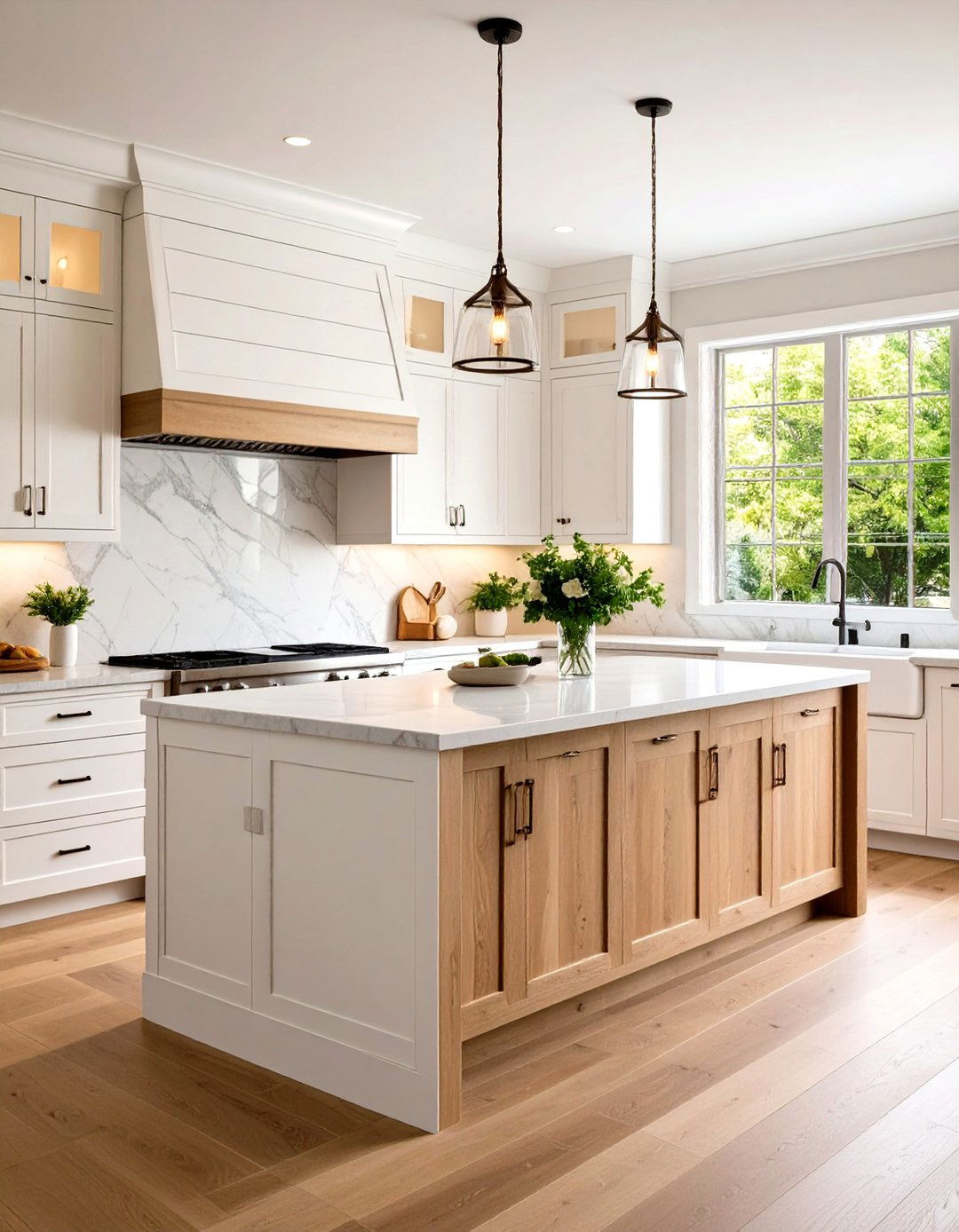
For a luxe twist, pair shiplap with marble panels—install shiplap above or to the sides of a solid marble backsplash. The juxtaposition of warm wood and cool stone creates sophisticated contrast. Joanna Gaines famously opted for white shiplap surrounding matching marble slabs, achieving a seamless, upscale look that retains farmhouse charm. This approach works best when marble absorbs minimal grout lines, allowing the shiplap’s texture to stand out. To protect the wood near cooking surfaces, apply a clear sealant that resists heat and moisture without altering the finish.
9. Shiplap and Subway Tile Hybrid
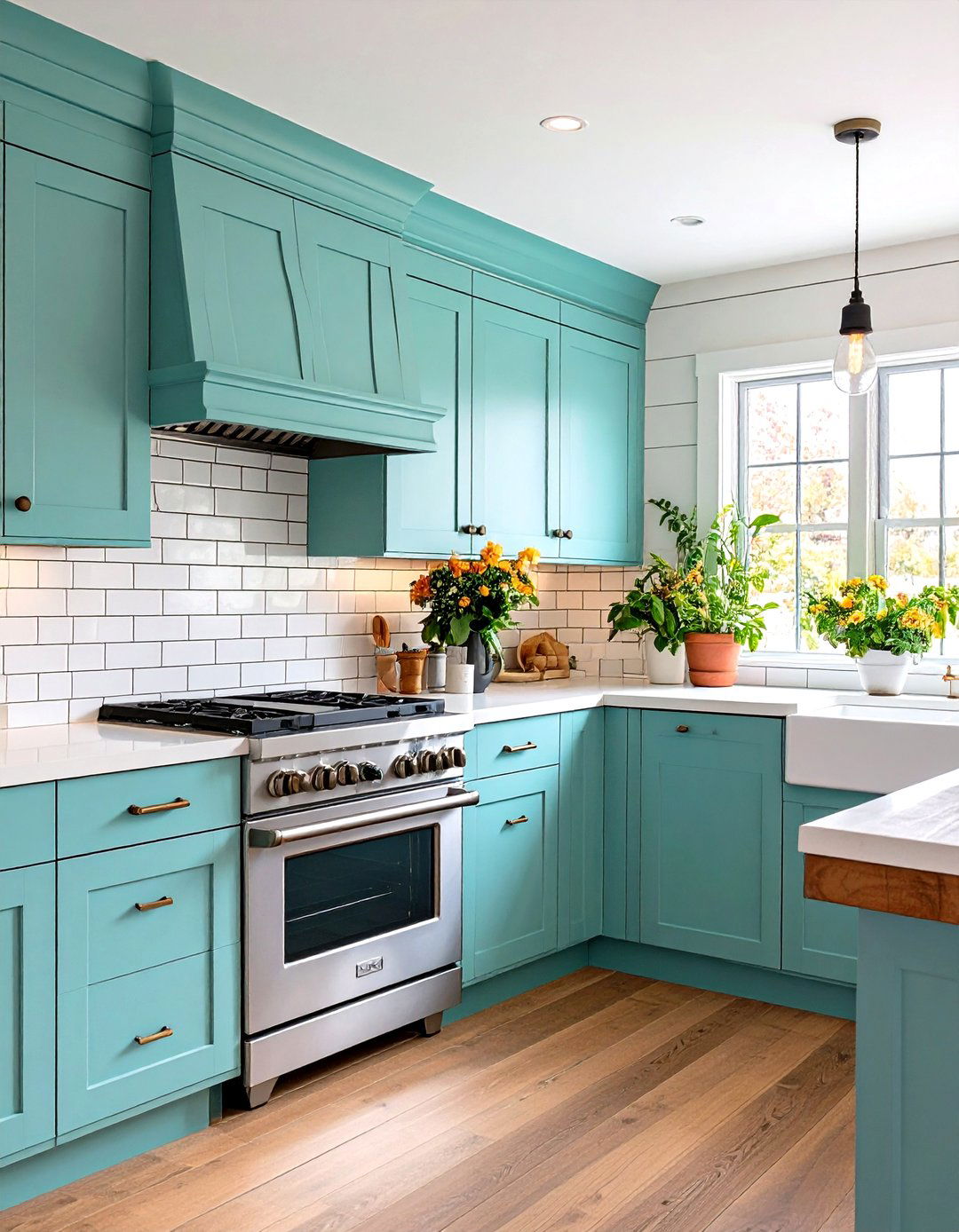
For added practicality around messy zones, install subway tile directly behind the stove or sink, then transition to shiplap on the remaining backsplash area. This hybrid design combines tile’s wipe-clean surface where it’s most needed with the warmth and affordability of shiplap elsewhere. Use matching grout lines to create a cohesive boundary between materials, or deliberately contrast grout color for a graphic separation. This solution balances functionality and style, making routine cleaning easier while keeping installation costs down by limiting tile coverage.
10. Rustic Shiplap with Exposed Brick
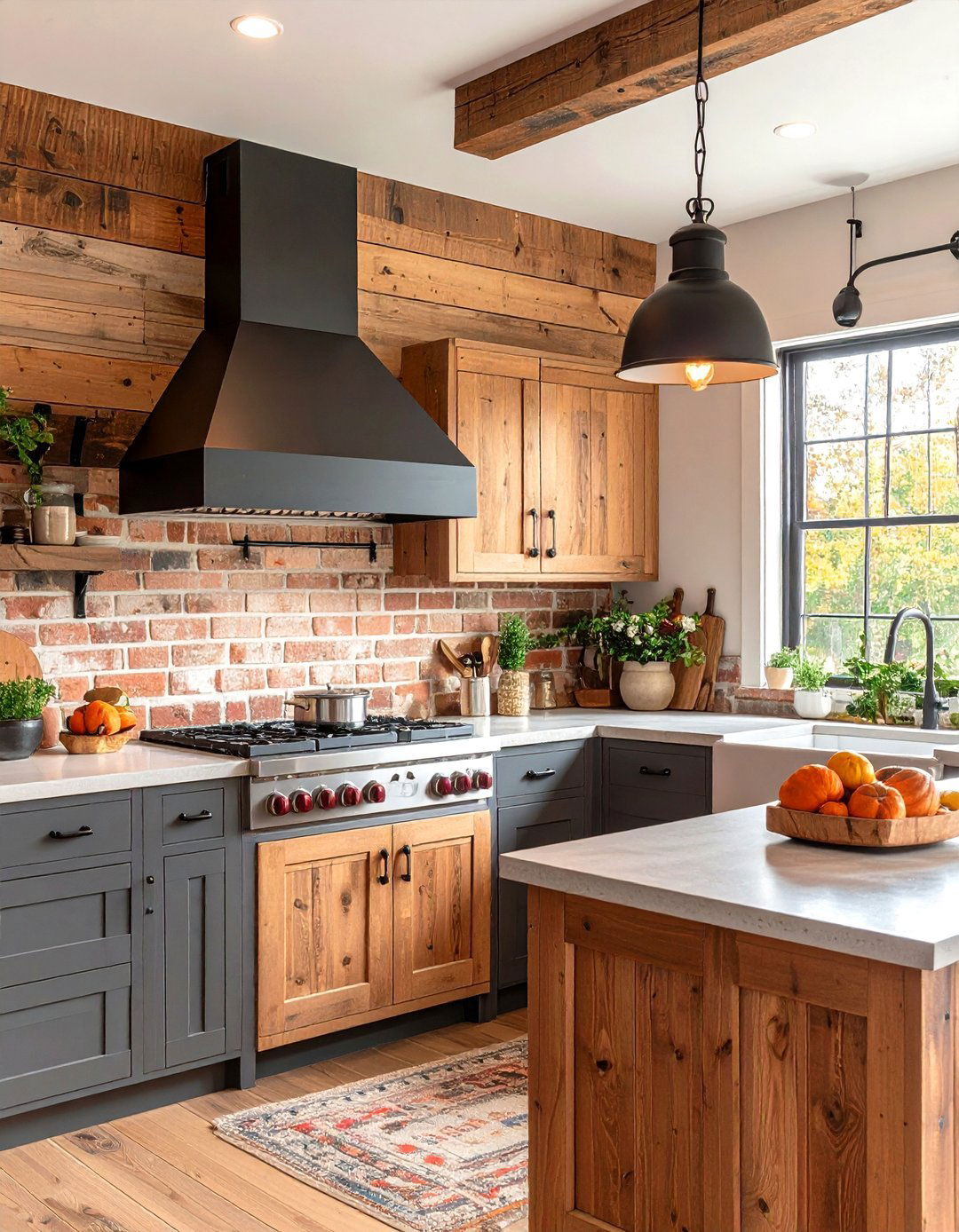
Blend reclaimed brick and shiplap in a single backsplash for a rustic industrial aesthetic. Expose a central brick section—perhaps behind a farmhouse sink—and flank it with painted or stained shiplap boards. The tactile brick surface contrasts beautifully with the smoother wood planks, adding depth and a sense of history. Seal both materials with appropriate sealants: masonry sealers for brick and wood varnish for shiplap. This eclectic mix works well with vintage lighting fixtures and iron shelving, reinforcing the antique-industrial vibe.
11. Whitewashed Shiplap
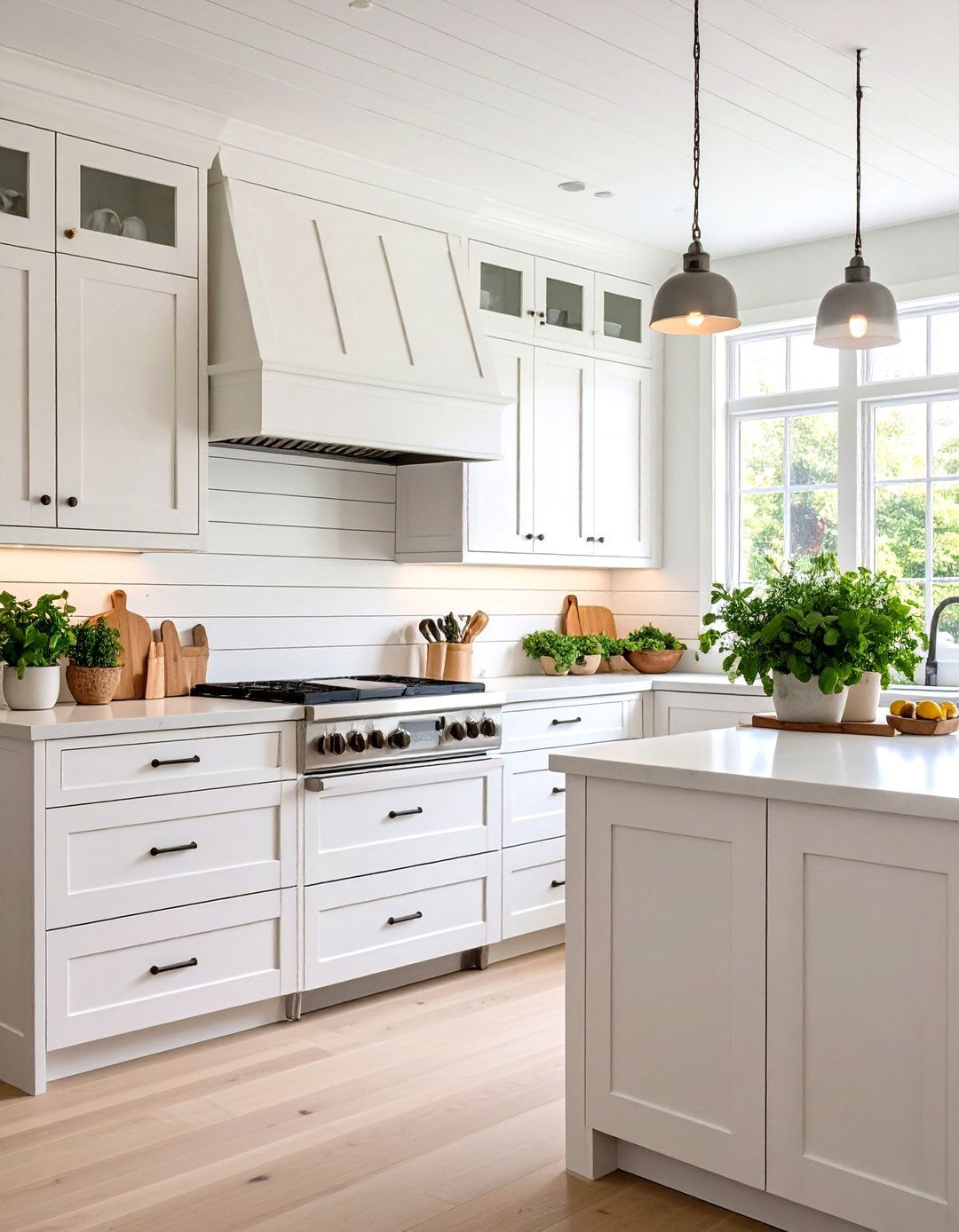
Whitewashing shiplap softens the look of natural wood while allowing subtle grain to peek through. By diluting white paint with water or a clear glaze, you achieve a translucent effect that brightens the kitchen without erasing texture. This finish complements coastal and Scandinavian-inspired kitchens, pairing seamlessly with light countertops and open shelving. The semi-transparent coat provides moisture resistance and can be refreshed periodically. The result is an airy, casual backdrop that maintains the rustic charm of shiplap while keeping spaces luminous.
12. Black Shiplap for Contrast

Make a bold statement by painting shiplap boards matte black or deep charcoal. Dark shiplap adds drama behind white cabinetry and brass hardware, creating a high-contrast, contemporary look. Its striking backdrop emphasizes open shelving contents and metallic accents. To avoid visible dust, choose a matte finish that conceals minor imperfections and apply a wipe-clean topcoat. Black shiplap works especially well in galley or industrial-style kitchens, balancing stark minimalism with rich texture and depth.
13. Shiplap Around Stove Hood
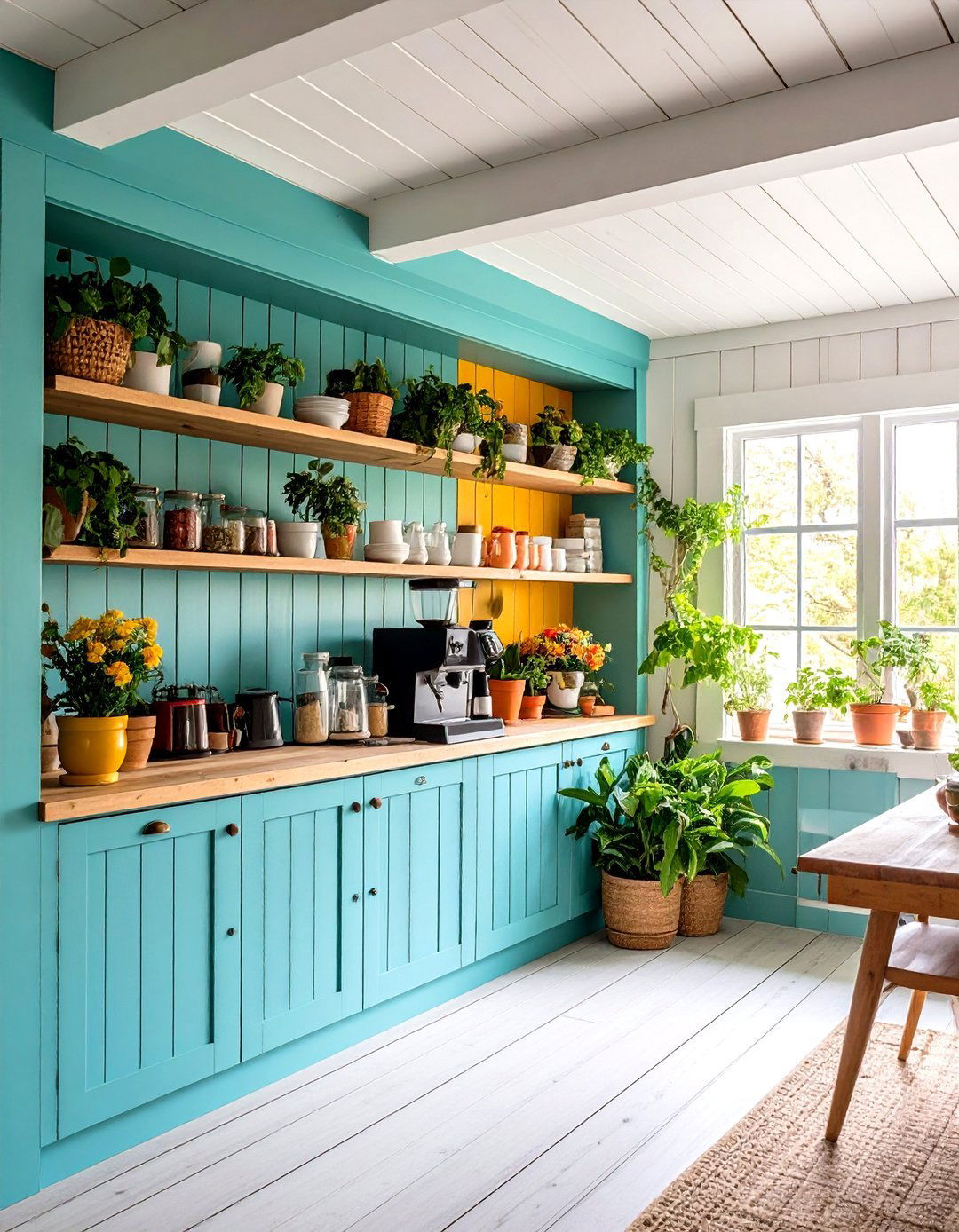
Frame your range hood with a shiplap surround that extends from the countertop to the ceiling. Whether the boards align horizontally, vertically, or in a chevron formation, this treatment draws attention to the cooking zone. Painting the shiplap the same color as the cabinetry or vent hood creates cohesion, while a contrasting color makes the hood a focal point. The height of the shiplap panels accentuates the kitchen’s vertical space, and the continuous surface simplifies cleaning splatters and grease.
14. Shiplap Alcove with Open Shelving
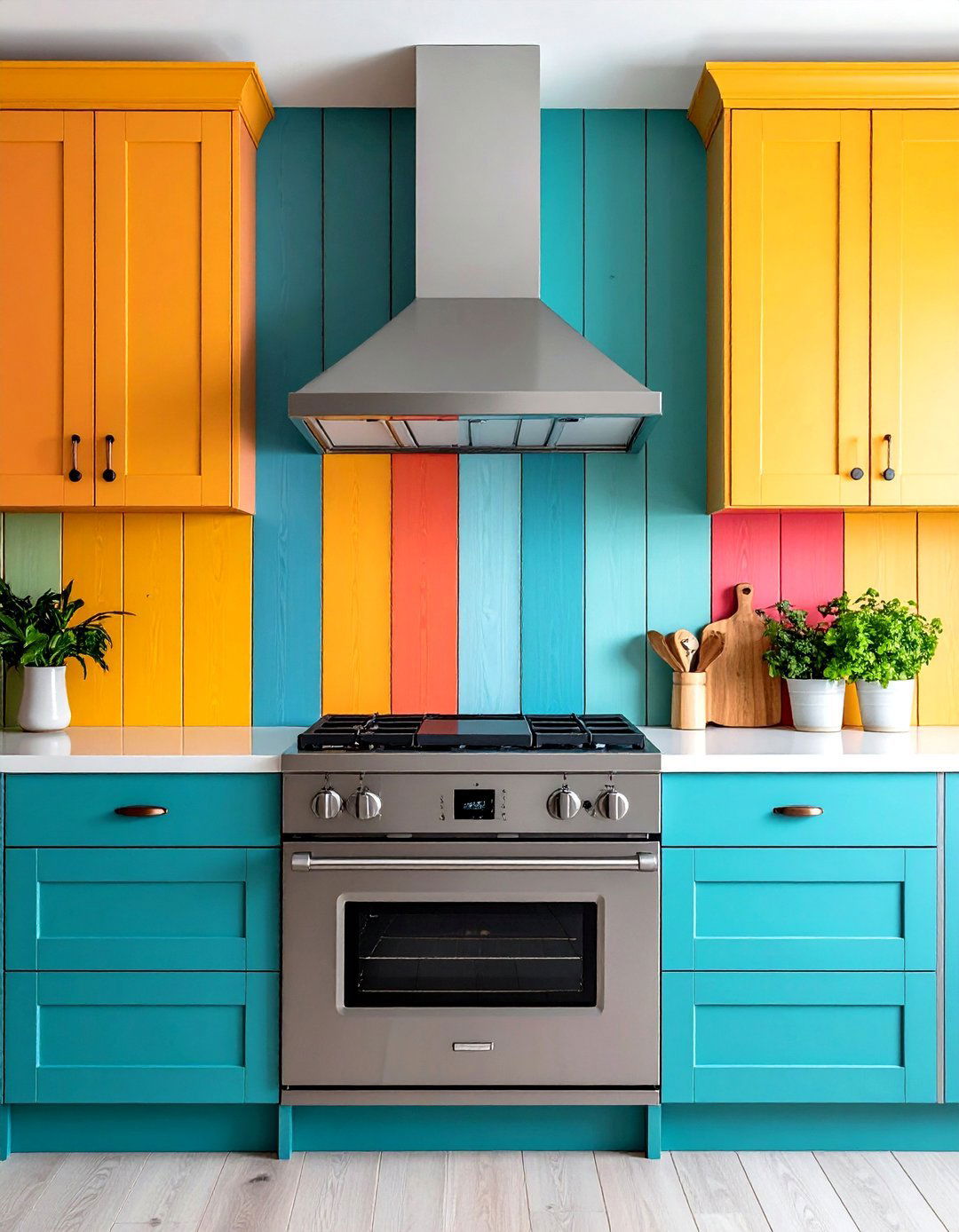
Recess shiplap into a shallow alcove behind open shelves to create a curated display niche. The layered effect—shiplap at the back, shelves in front—adds dimension and architectural interest. Use this technique above a beverage station or coffee bar to highlight decorative mugs and barware. By painting the shiplap an accent color, you can showcase collection pieces against a vibrant backdrop. The alcove approach keeps the shiplap contained, reducing the need for full-wall coverage while maintaining visual impact.
15. Shiplap with Under-Cabinet Lighting
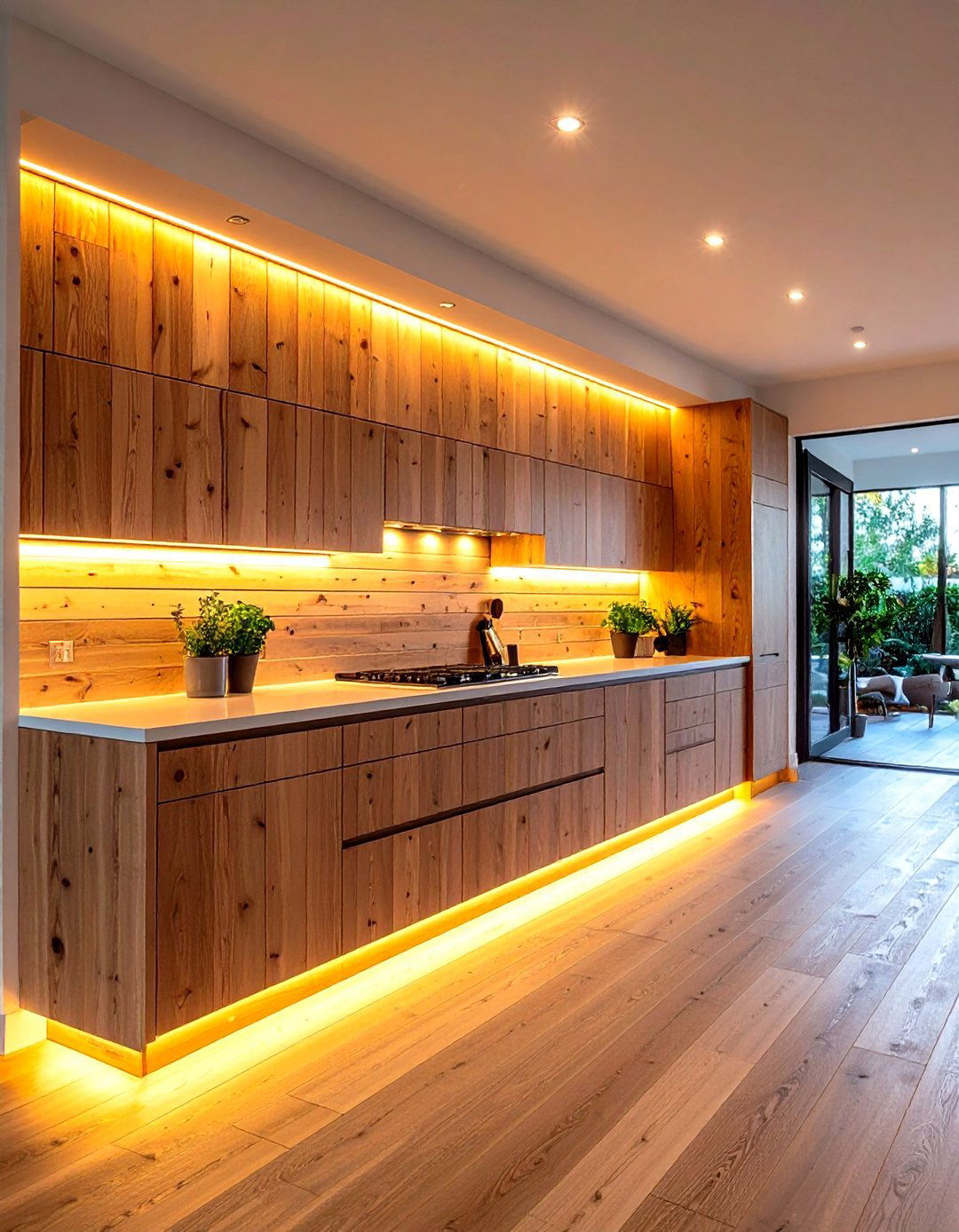
Enhance the texture of your shiplap backsplash by installing LED strip lights beneath upper cabinets. The angled illumination highlights the grooves between boards, casting subtle shadows that emphasize wood grain. Warm LED tones complement painted or stained shiplap finishes, creating an inviting ambiance for evening cooking. Under-cabinet lighting also improves task visibility on countertops. Ensure wiring is concealed behind upper cabinets for a clean installation, and choose dimmable fixtures for adjustable mood lighting.
16. Bold Painted Color Shiplap

Break away from neutrals by painting shiplap a bold hue—navy, forest green, or terracotta—for an unexpected backsplash. A rich color adds personality and focal interest, especially when balanced with light countertops and cabinetry. The shiplap’s board lines lend depth to the solid color, preventing it from feeling flat. Select high-quality, washable paint to withstand kitchen splatters, and consider pairing the bold backsplash with brass or black hardware to tie the palette together.
17. Shiplap with Metal Inlays
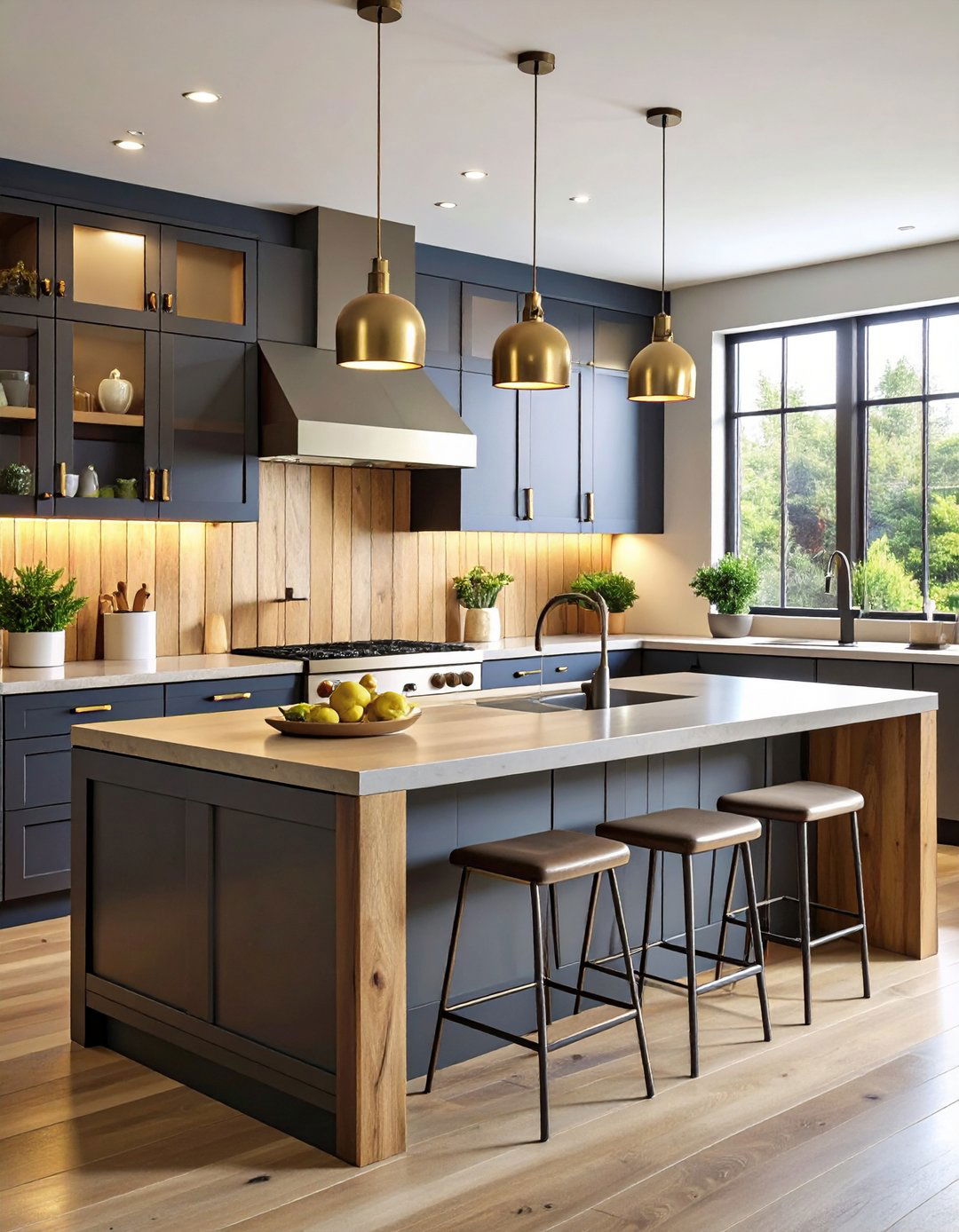
For a modern industrial twist, inset narrow metal strips—stainless steel or brass—between shiplap boards. The sleek metal lines catch light and add a refined detail to the rustic wood backdrop. This hybrid finish works beautifully around stainless appliances, echoing metallic tones. Installation requires precision cutting and adhesion of metal inlays before sealing the wood. The result is a custom, high-end backsplash that bridges farmhouse warmth and contemporary flair.
18. Shiplap Coffered Effect
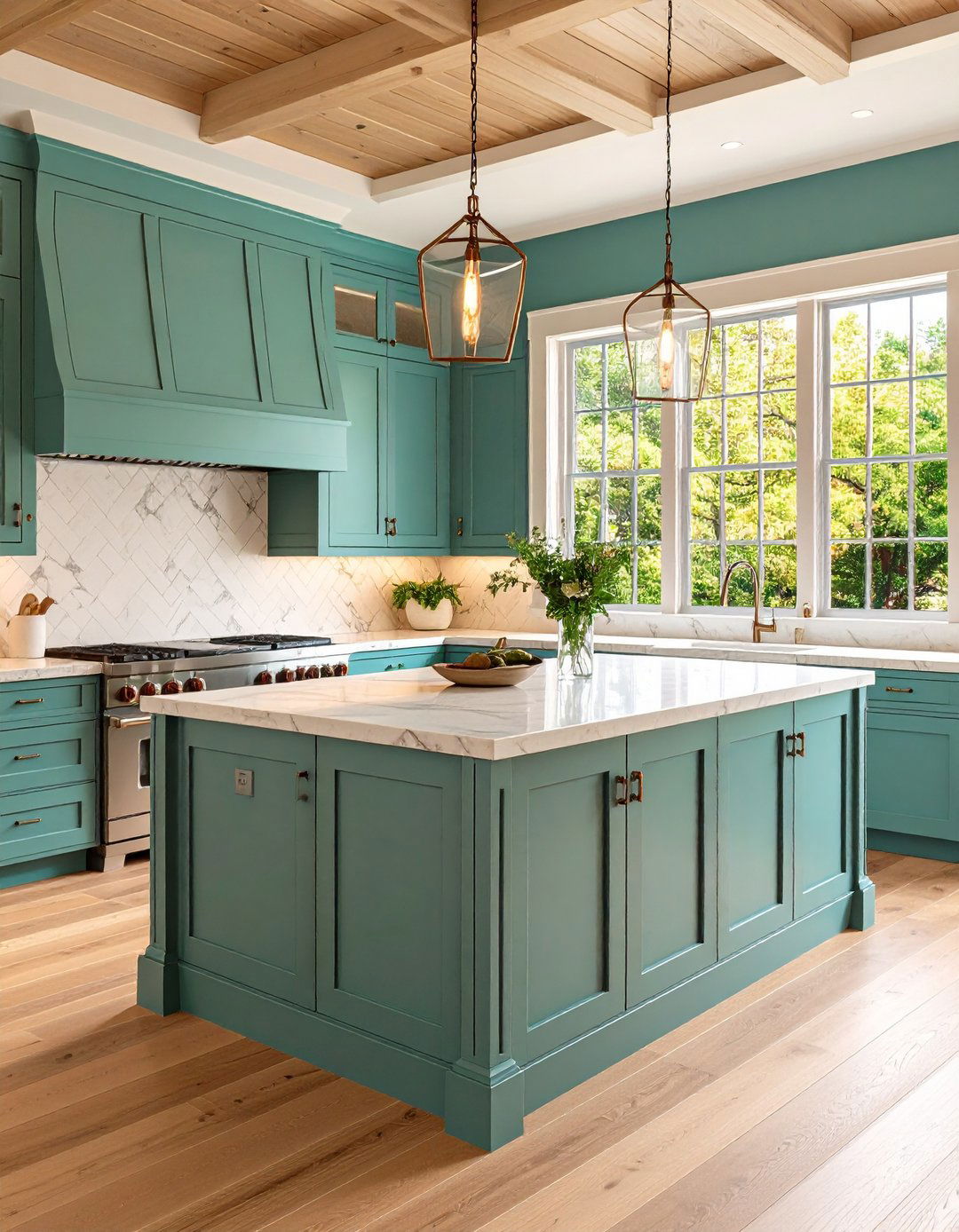
Create a coffered look by framing shiplap panels within grid-style battens, mimicking ceiling coffer designs on your backsplash. Install horizontal boards inside rectangular or square frames formed by thin battens painted a contrasting color. This architectural detail elevates the shiplap’s simplicity, giving it a three-dimensional, panelled appearance. Ideal for upscale transitional kitchens, the coffered backsplash pairs well with shaker cabinetry and marble countertops for a balanced, refined aesthetic.
19. Thin Shiplap for Modern Minimalism
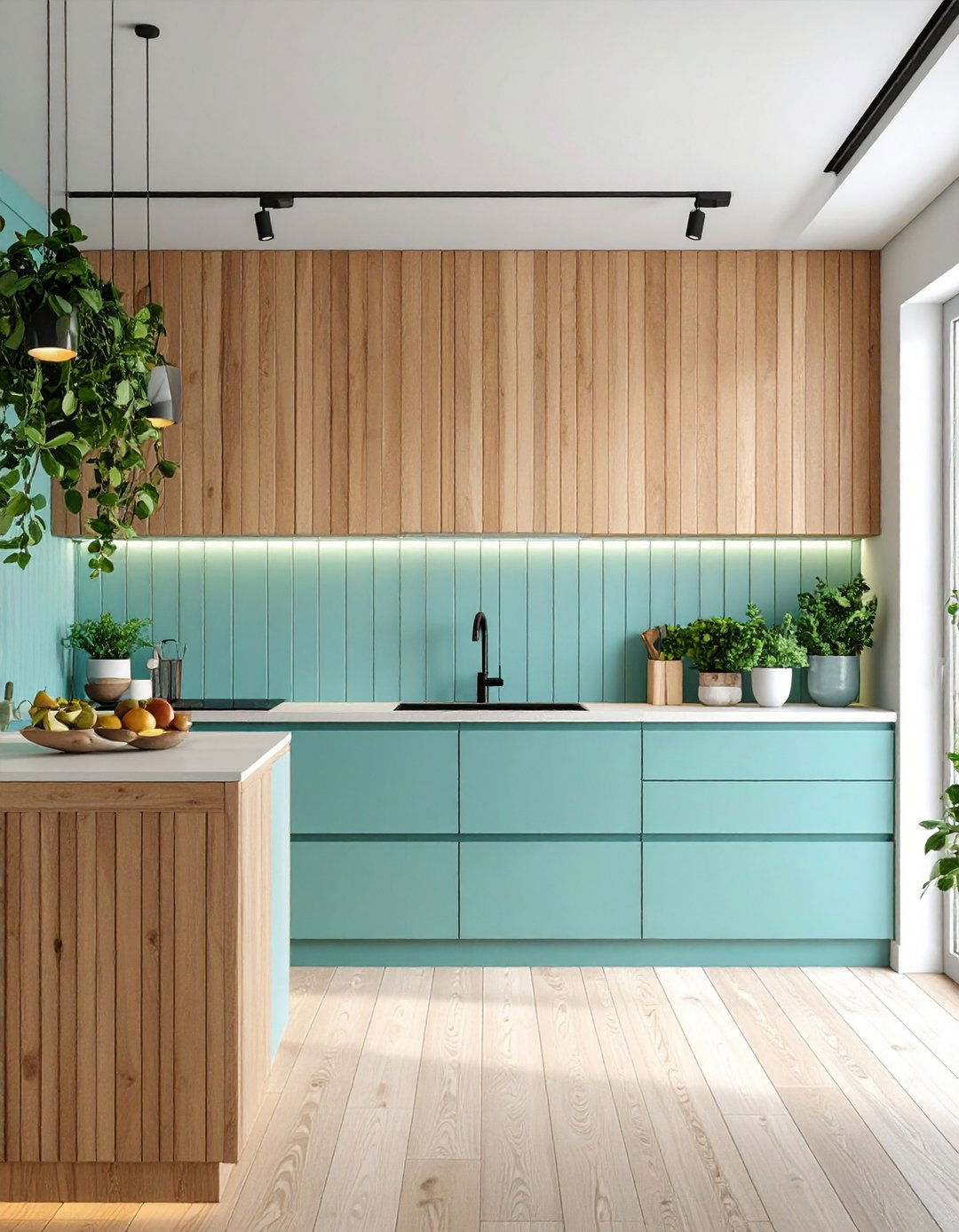
Opt for narrower shiplap boards—sometimes called batten strips—instead of traditional wide planks to achieve a minimalist look. The thinner grooves create a fine, continuous texture that feels lighter and more contemporary. Paint the entire backsplash in a single matte tone for a sleek effect, or leave the strips slightly tonal for subtle variation. Thin shiplap is particularly effective in compact kitchens, where it maintains visual interest without overwhelming the space.
20. Shiplap Wainscoting Style

Apply shiplap only to the lower half of the backsplash—mirroring wainscoting—while leaving the upper half painted or tiled. This half-height treatment protects the most splash-prone areas with durable wood and introduces decorative interest without full coverage. Finish the top edge of the shiplap with a narrow trim board for a polished transition. Wainscoting-style shiplap works well in kitchens with full-height cabinetry, adding a handcrafted touch without competing with upper storage.
Conclusion:
Shiplap backsplashes offer unmatched versatility, allowing homeowners to tailor board orientation, finish, and pattern to their unique kitchen style. From classic horizontal installations to intricate chevron designs and hybrid material pairings, shiplap can be adapted for farmhouse, industrial, coastal, and contemporary aesthetics alike. By exploring different paint colors, wood treatments, and architectural details—such as metal inlays and coffered frames—you can transform a simple wooden backsplash into a standout design feature. Whether budget-minded or seeking high-end finishes, these 20 ideas demonstrate how shiplap can warm, enliven, and personalize any kitchen space.


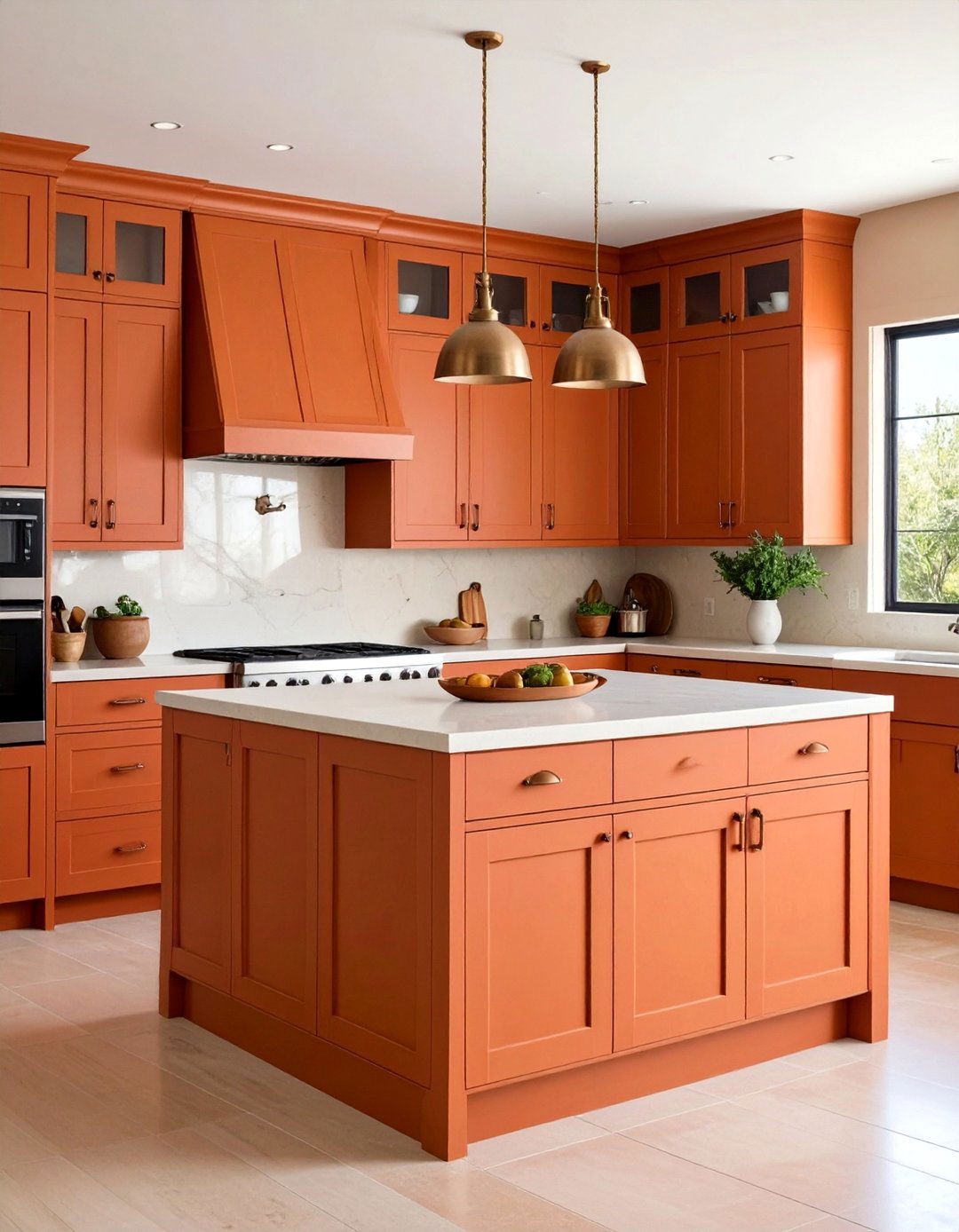
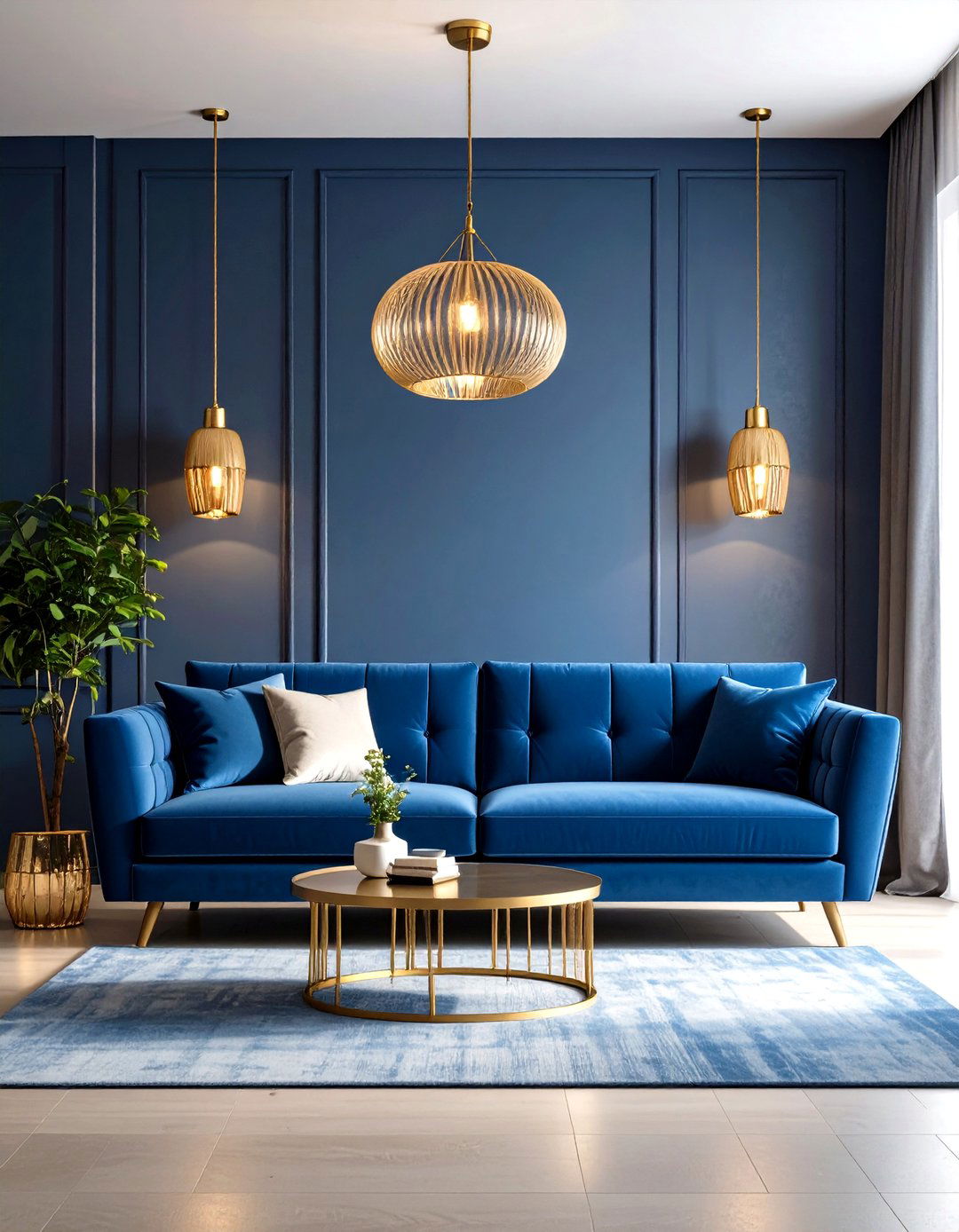

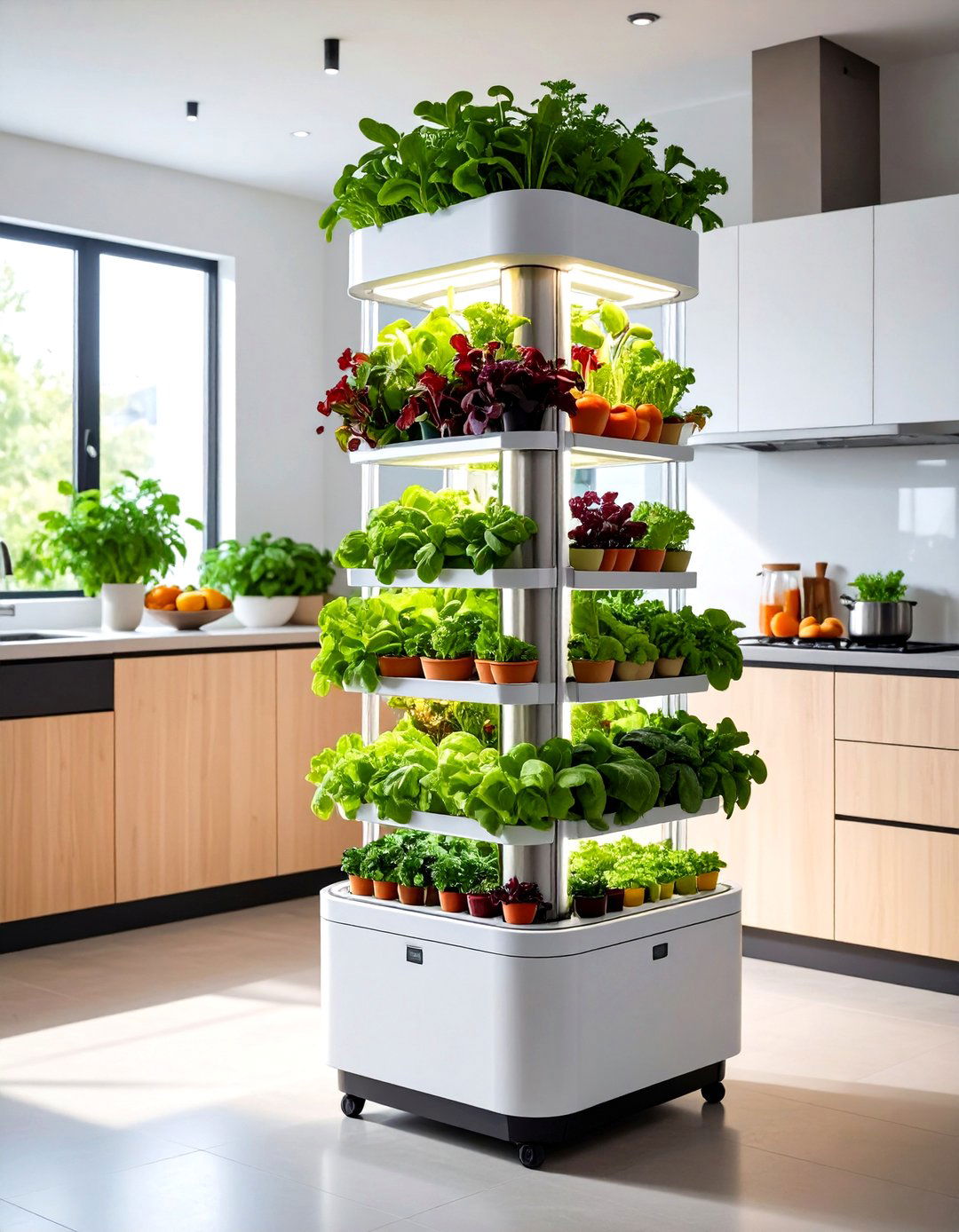
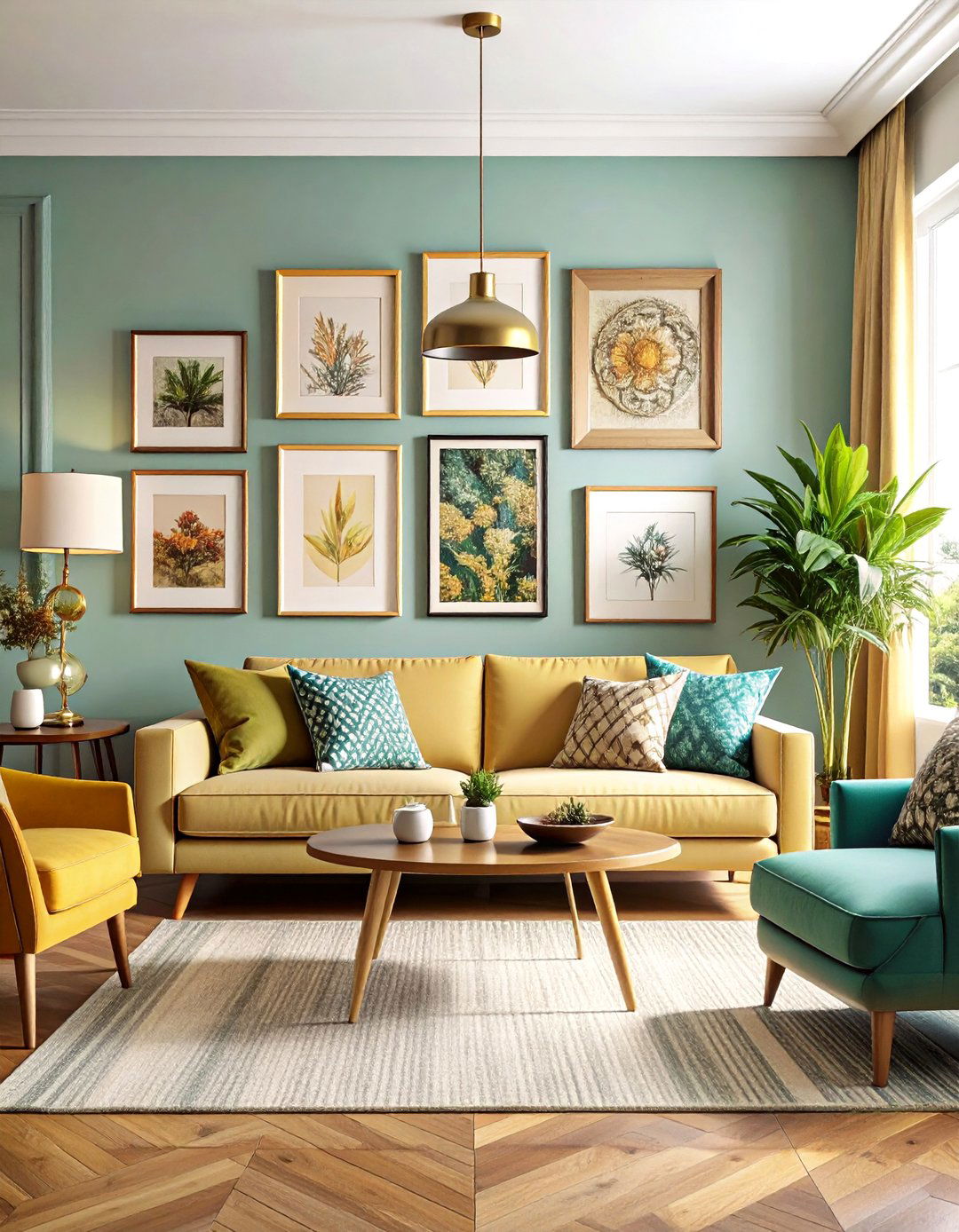
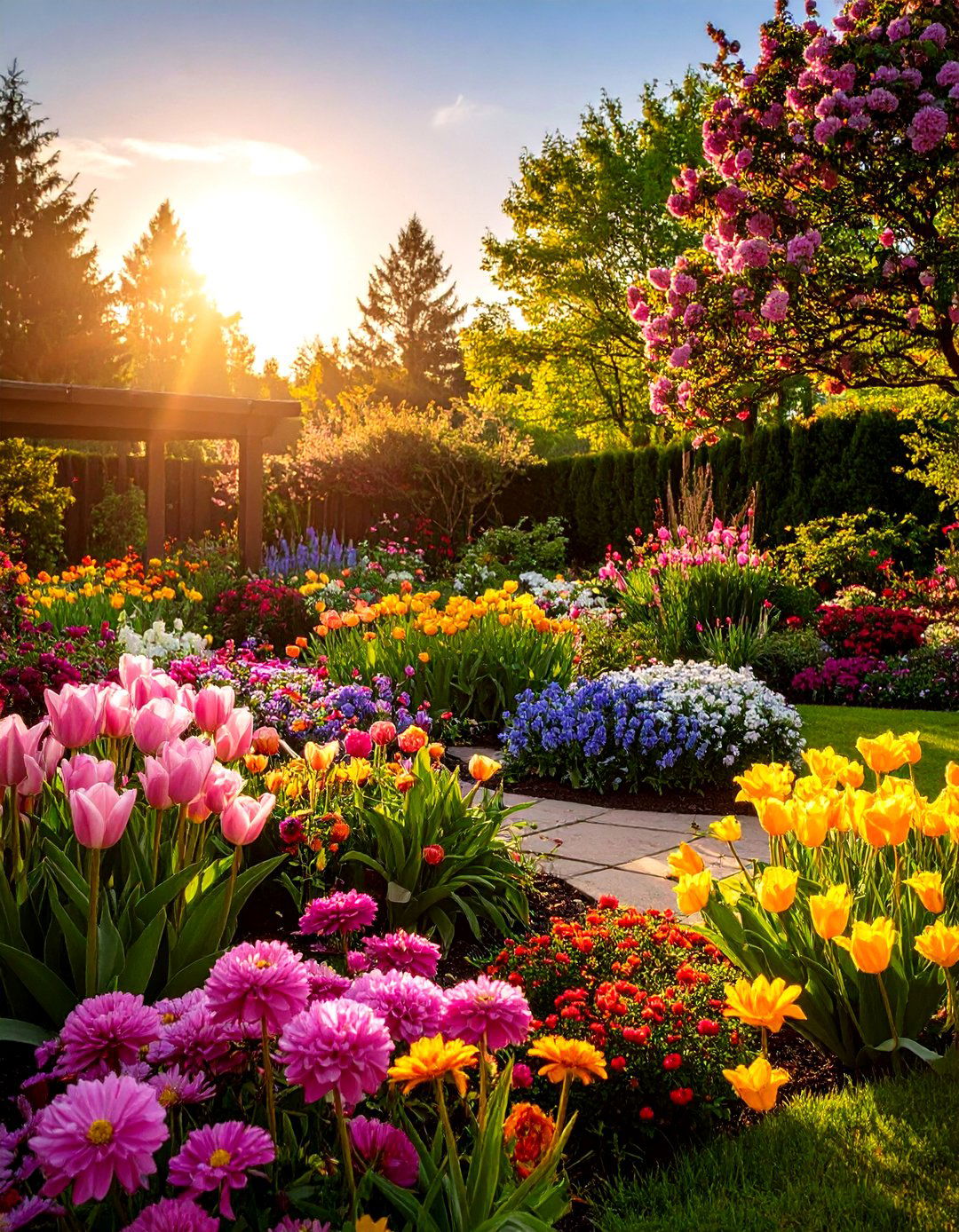

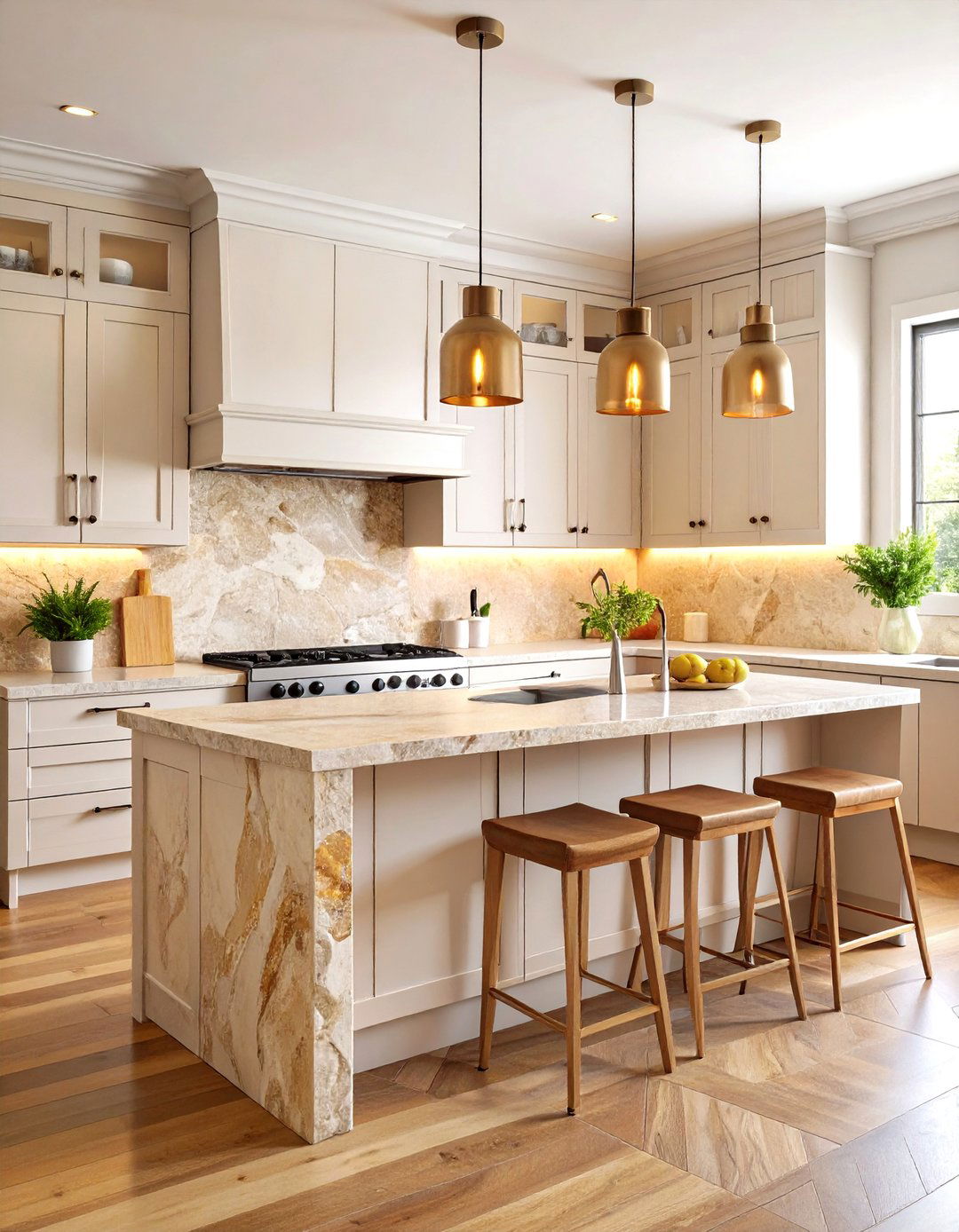
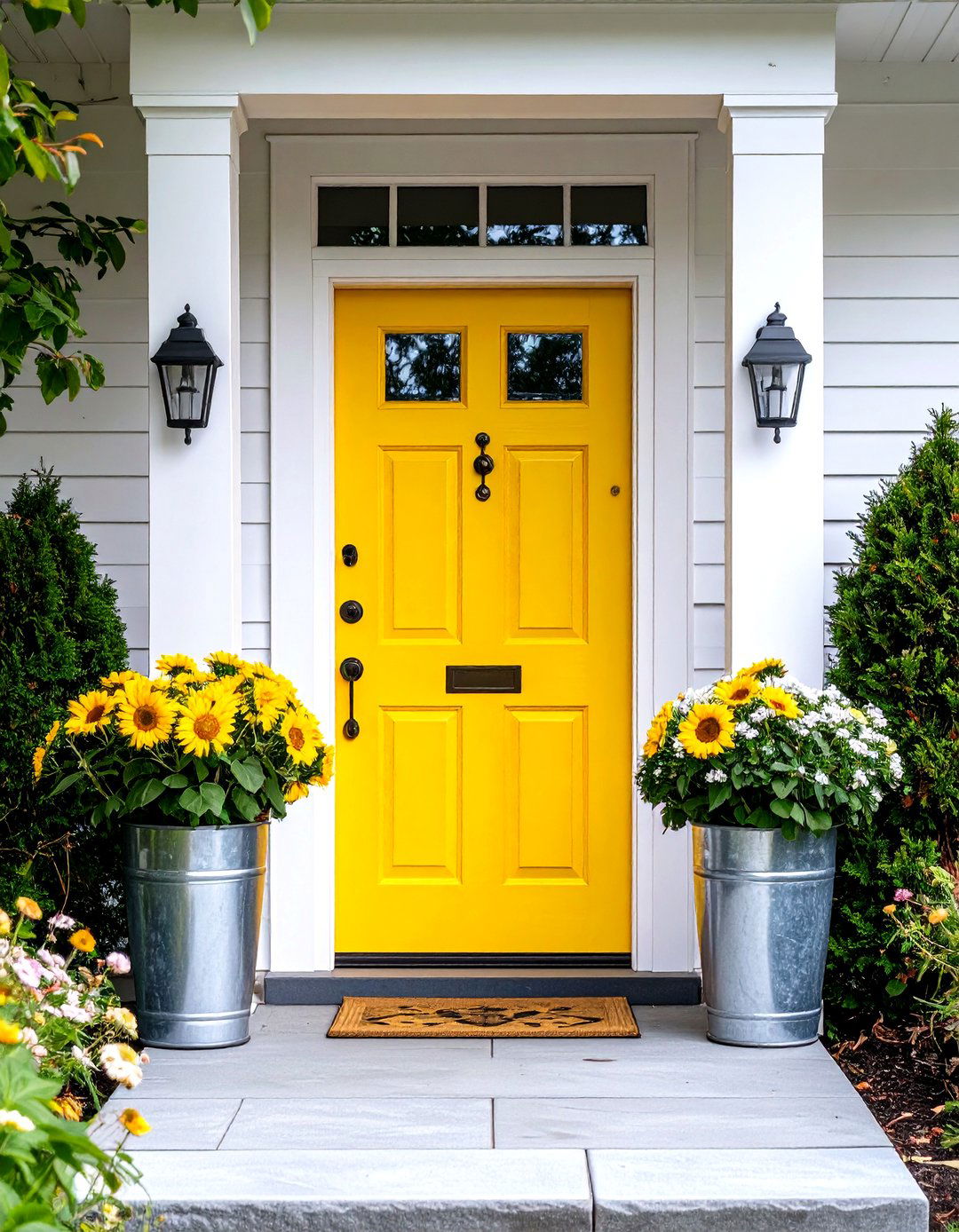
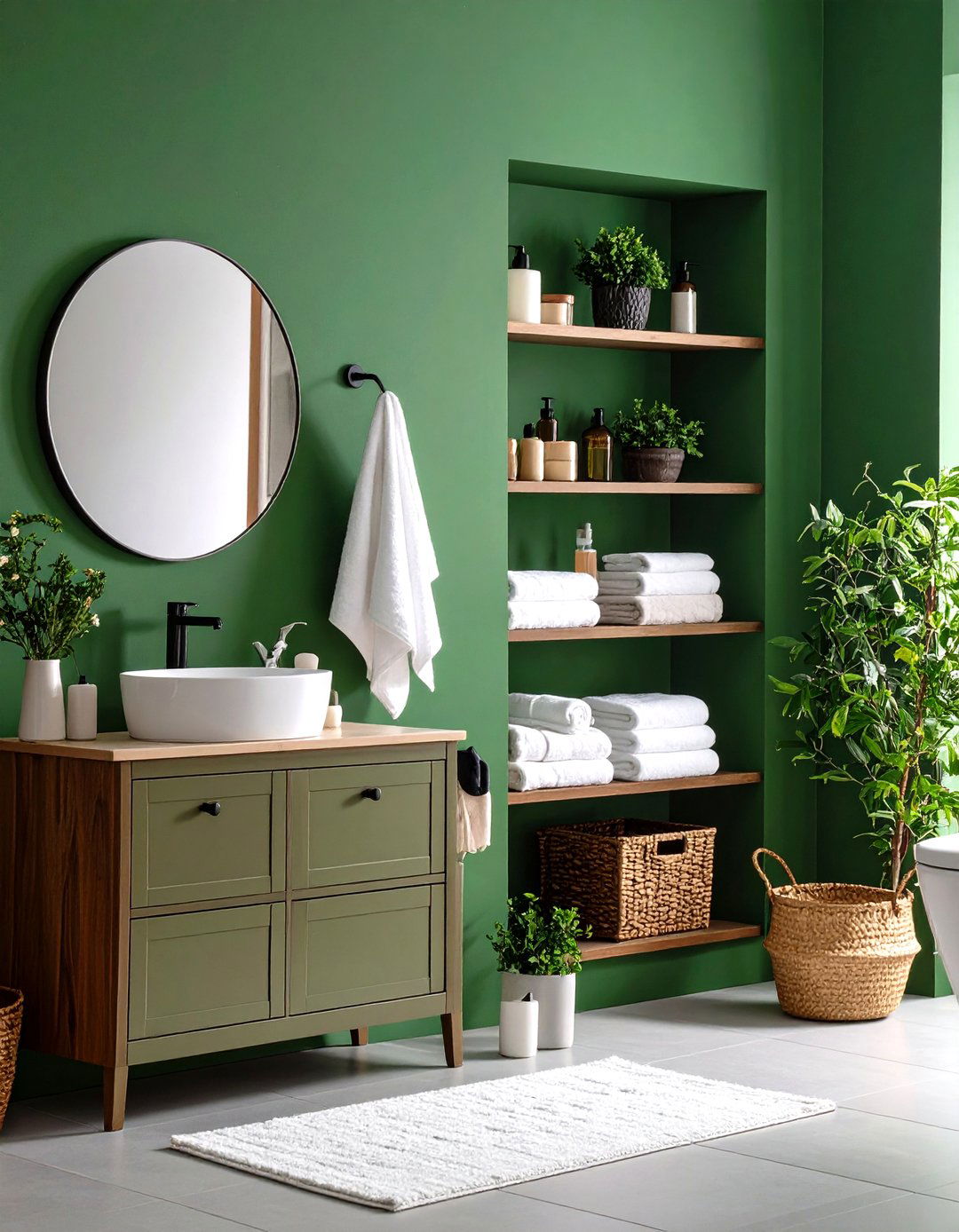
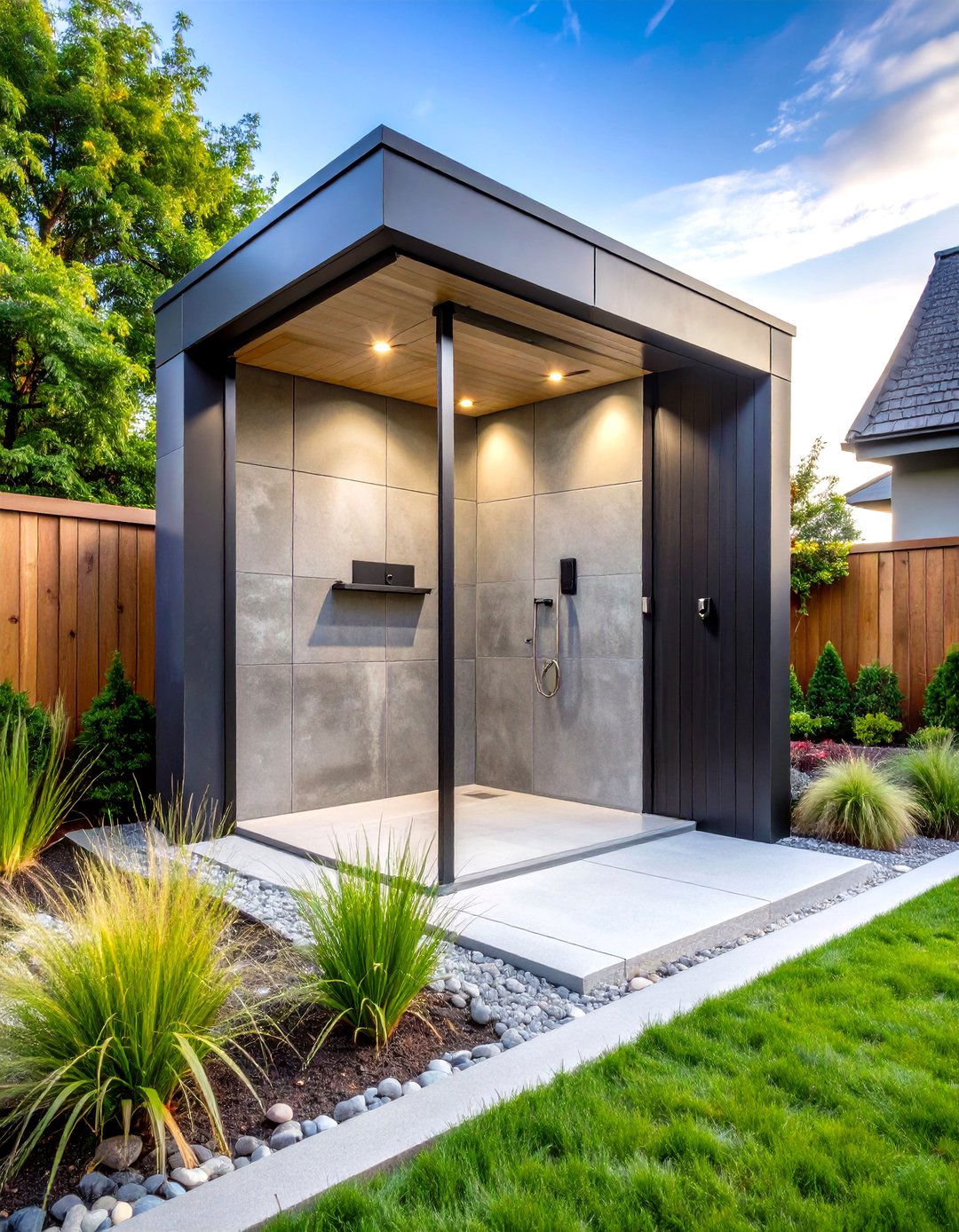
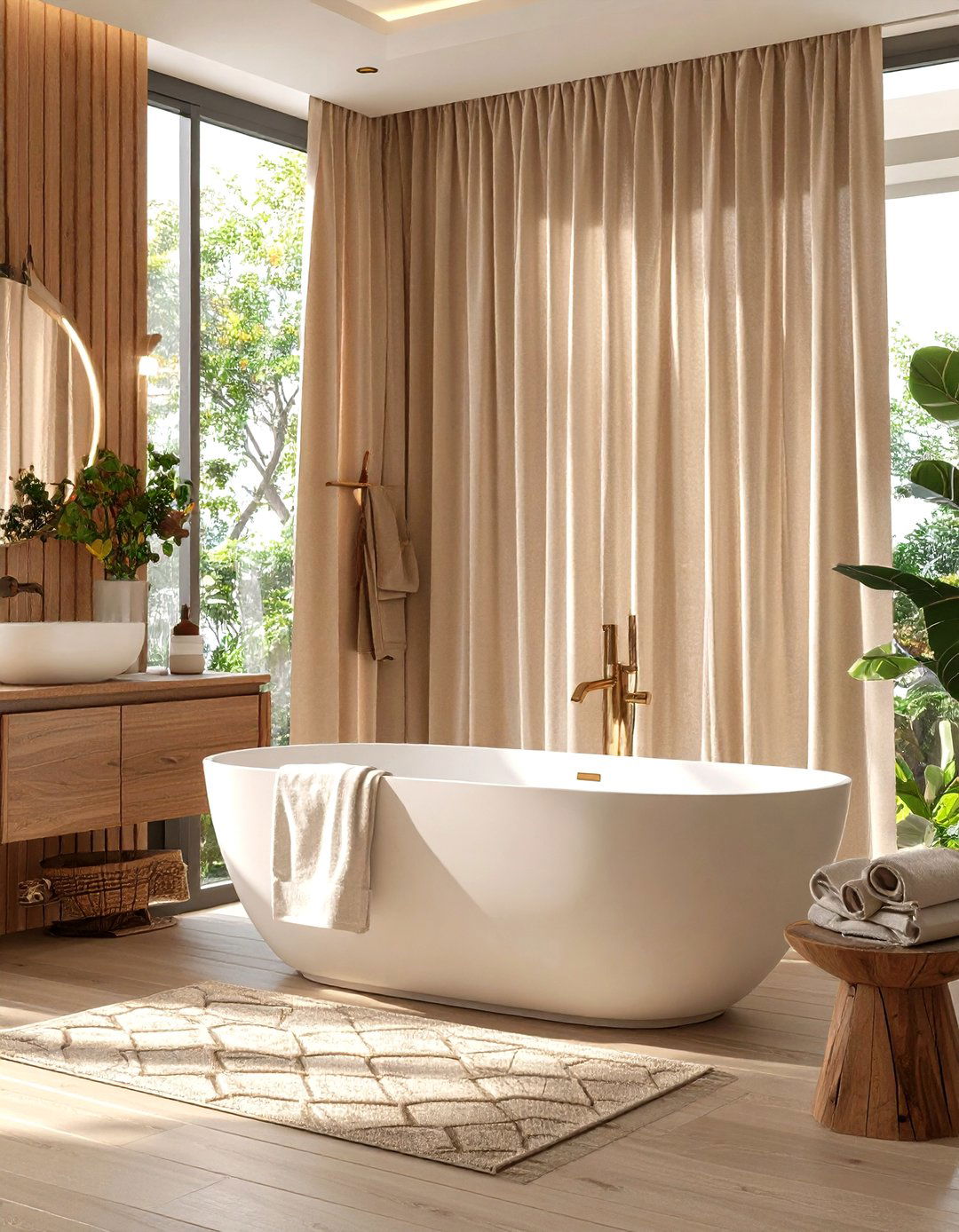
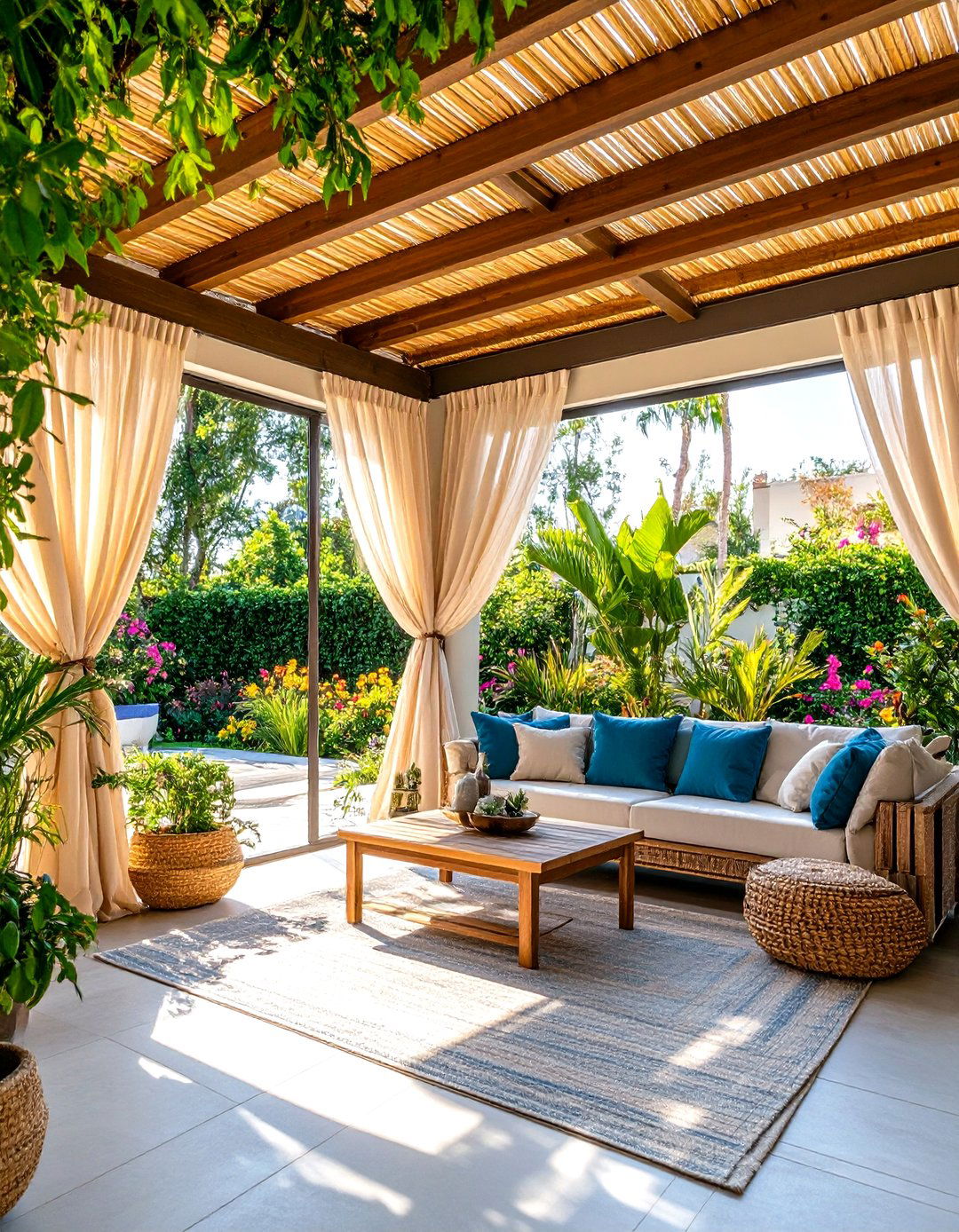
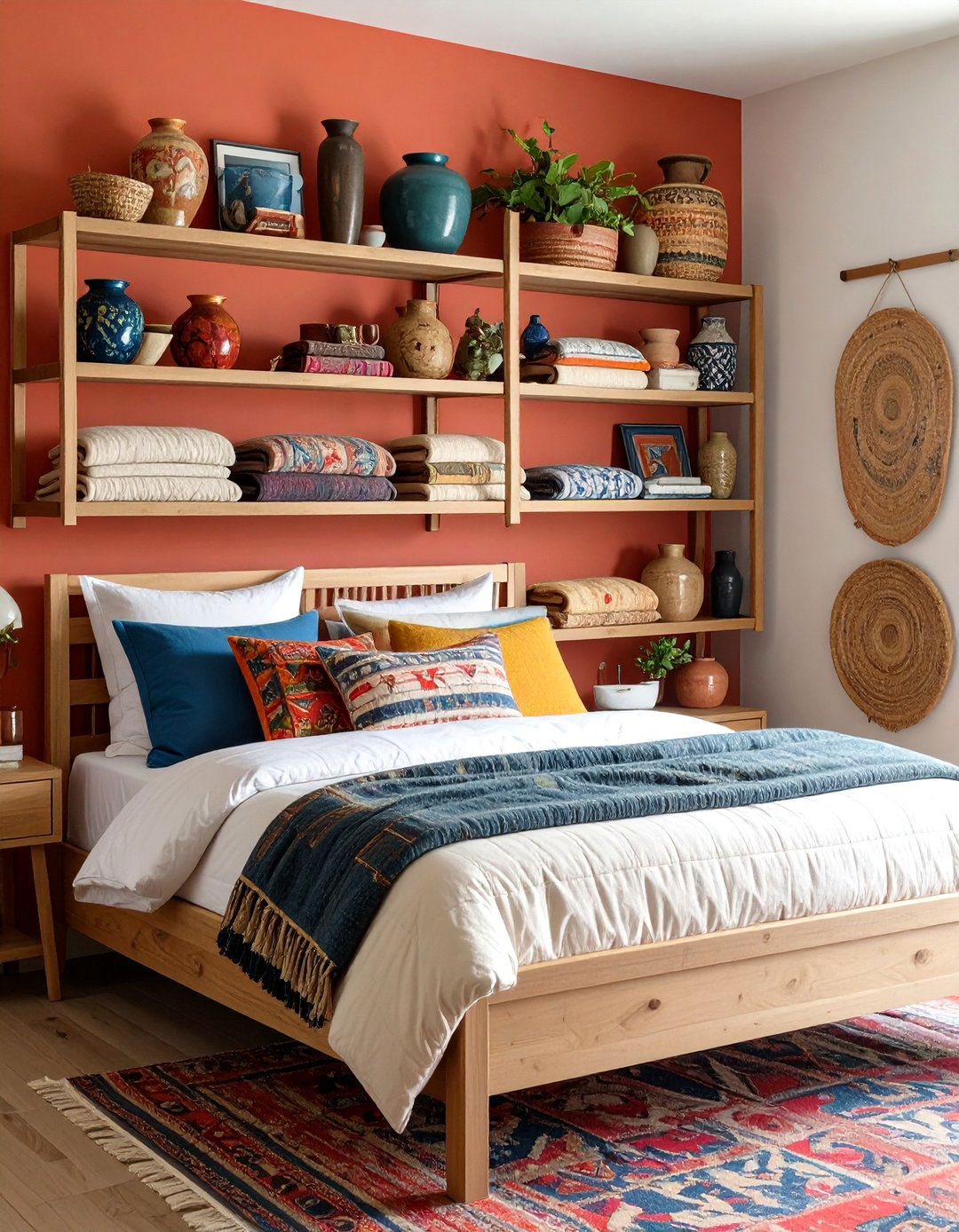

Leave a Reply